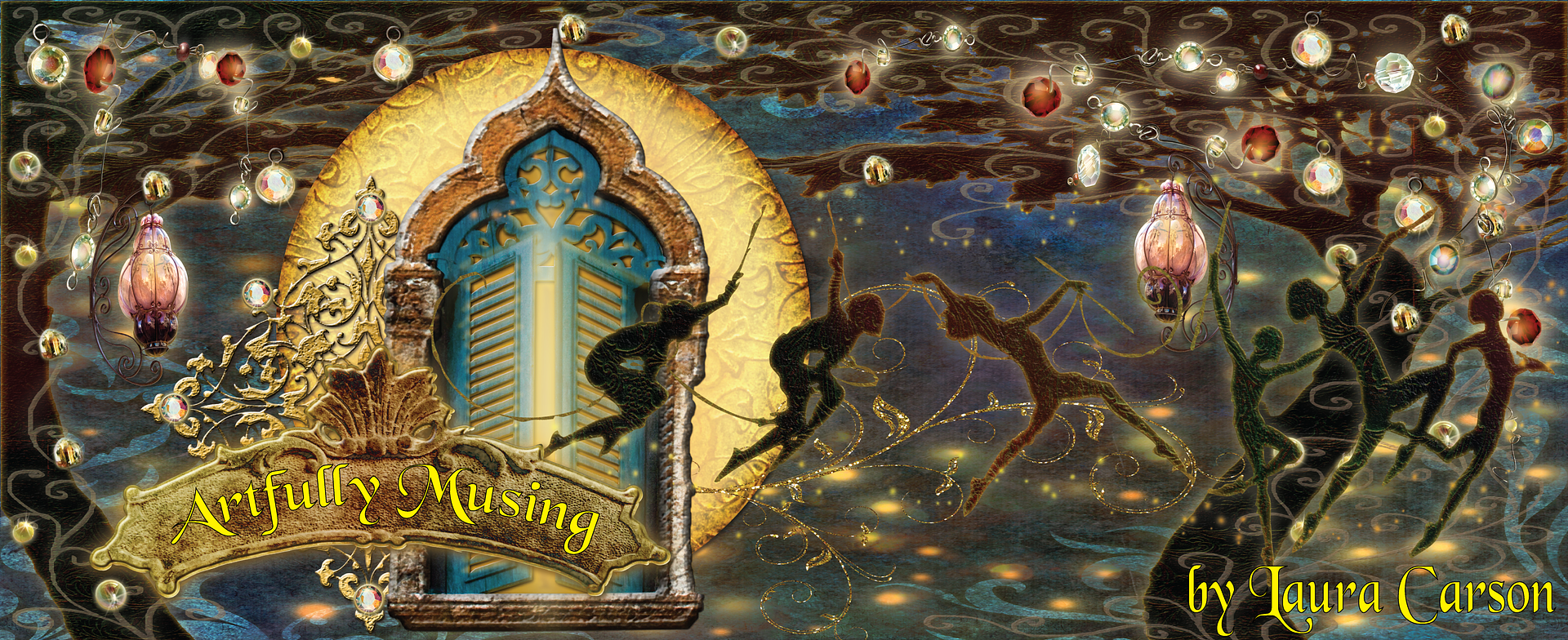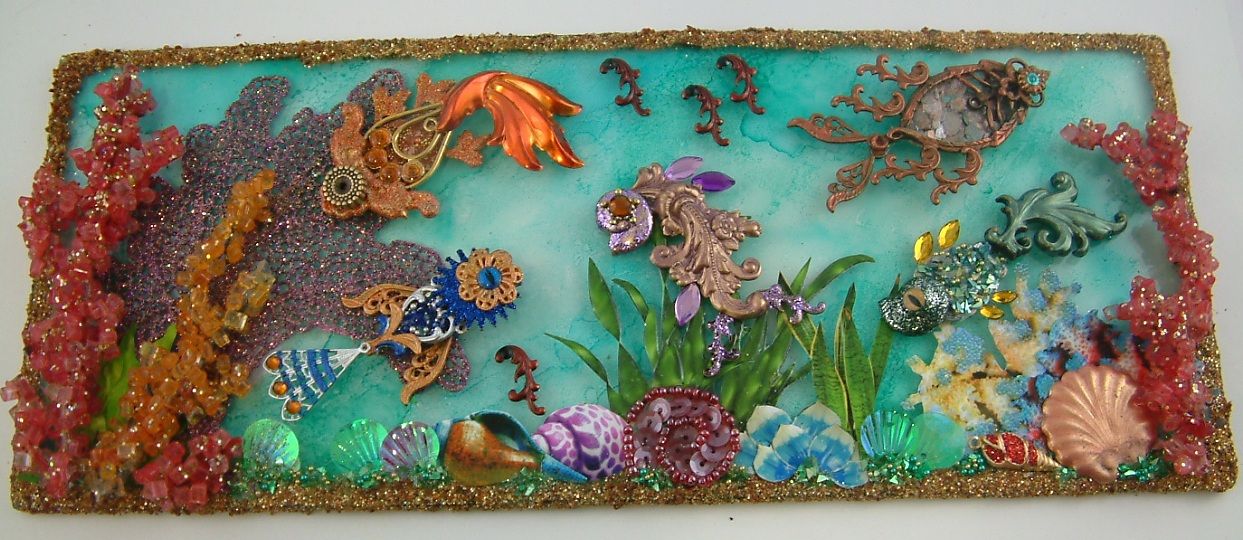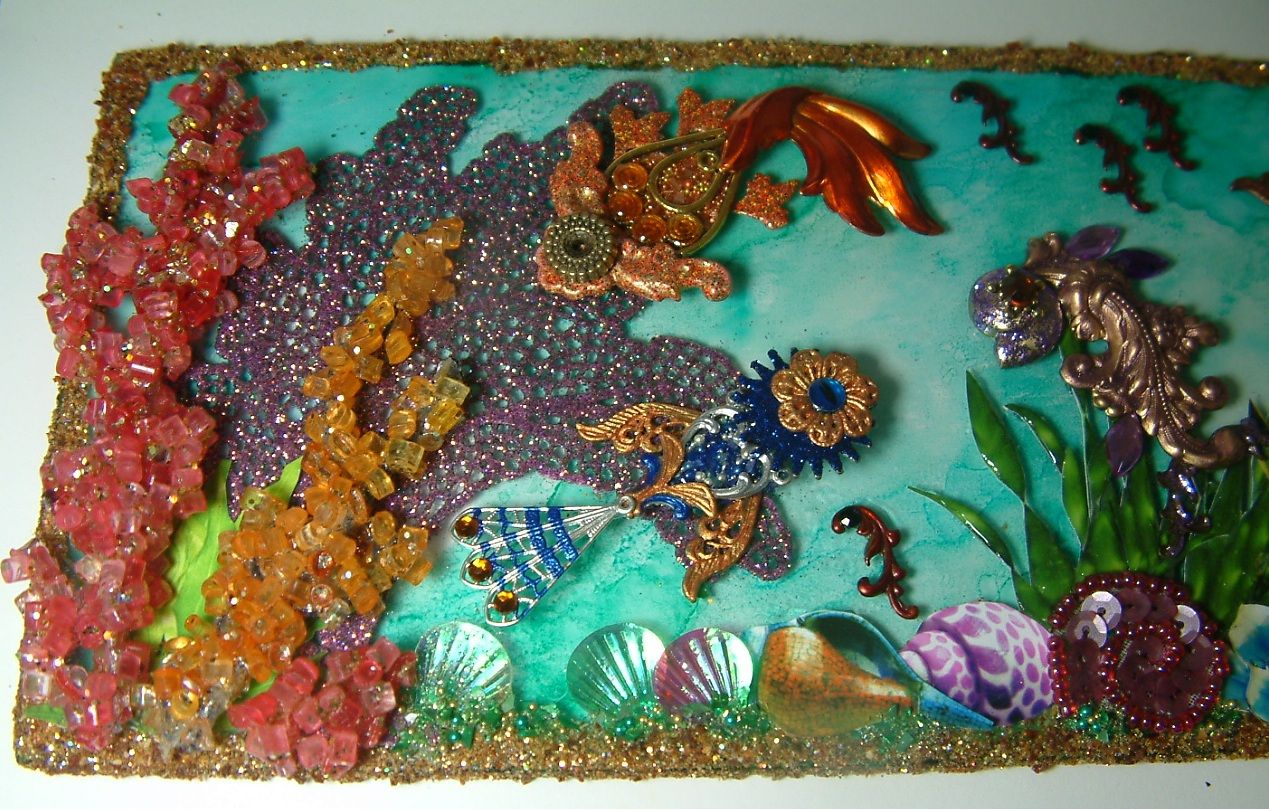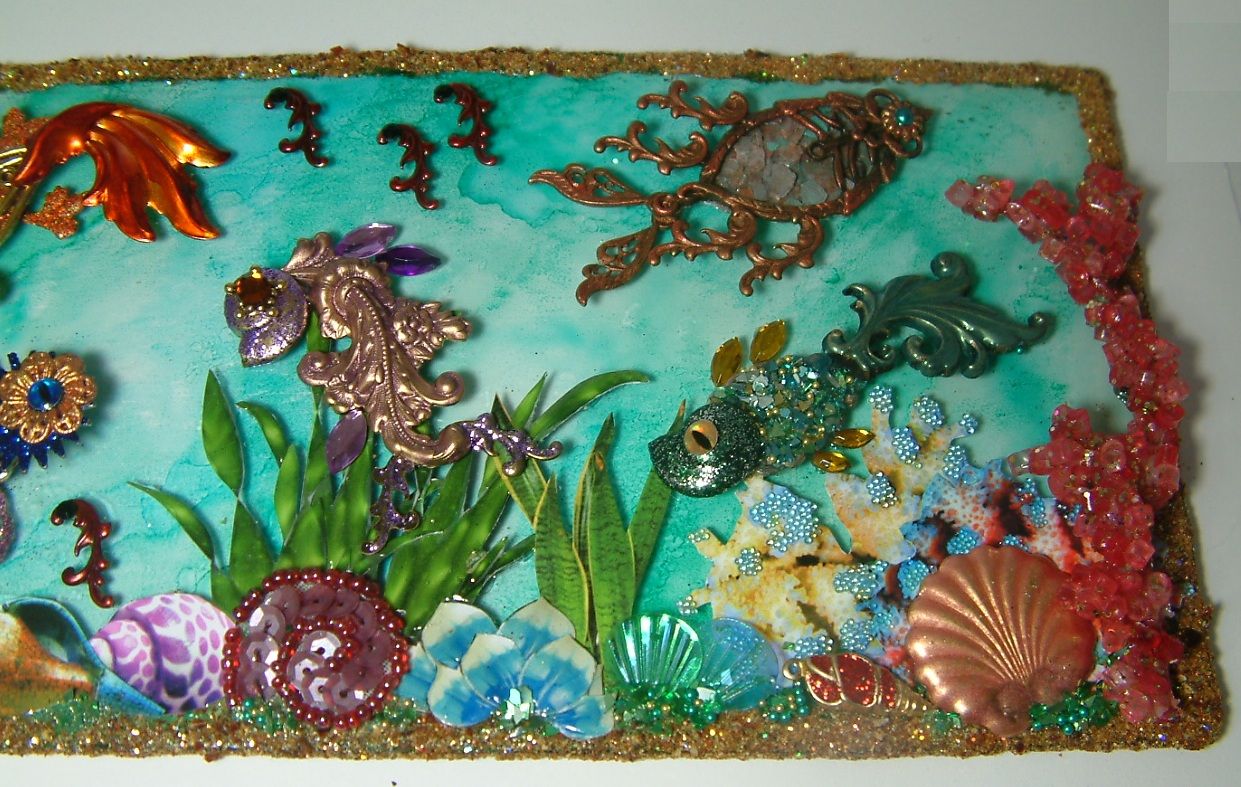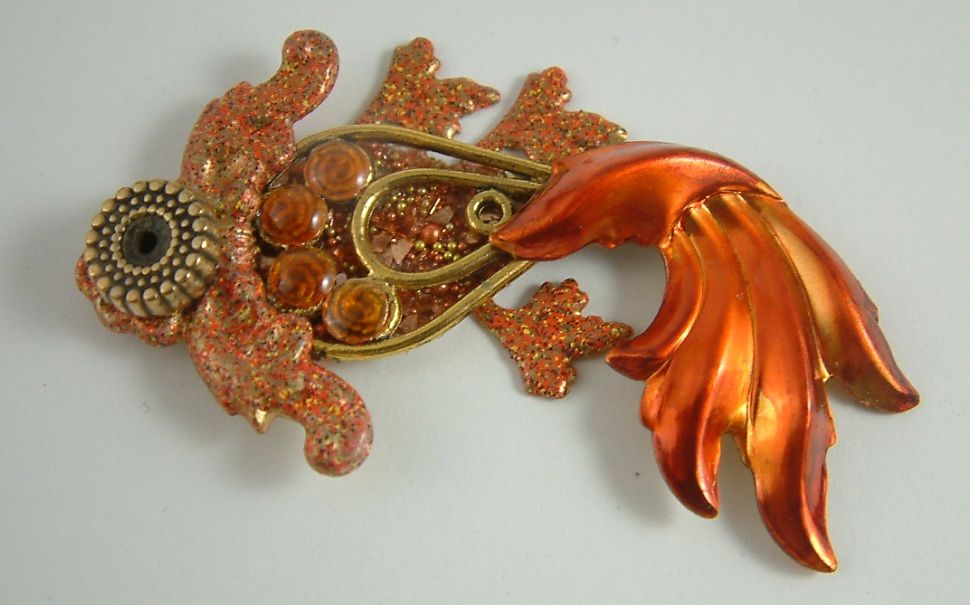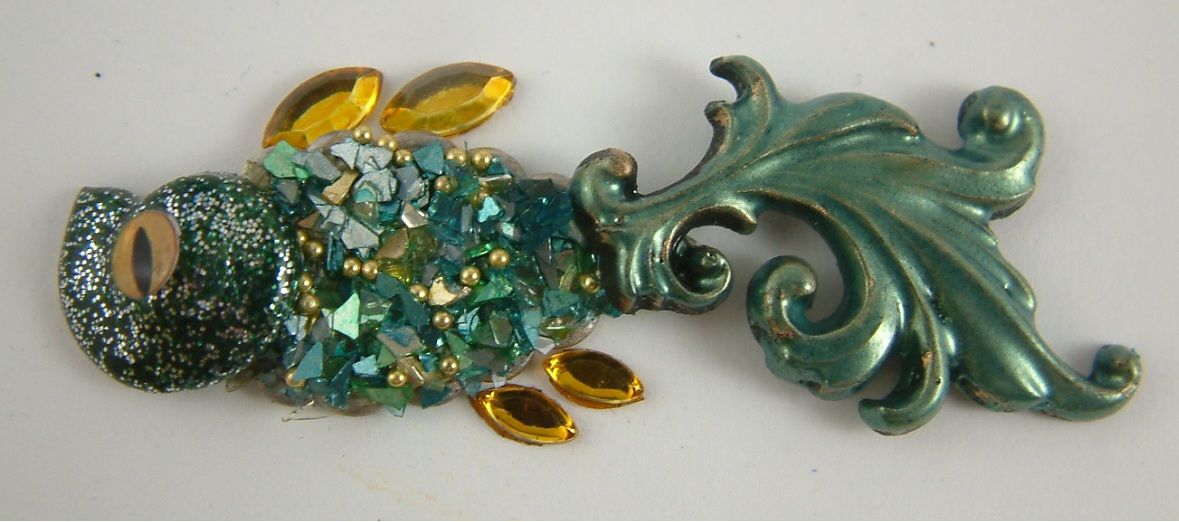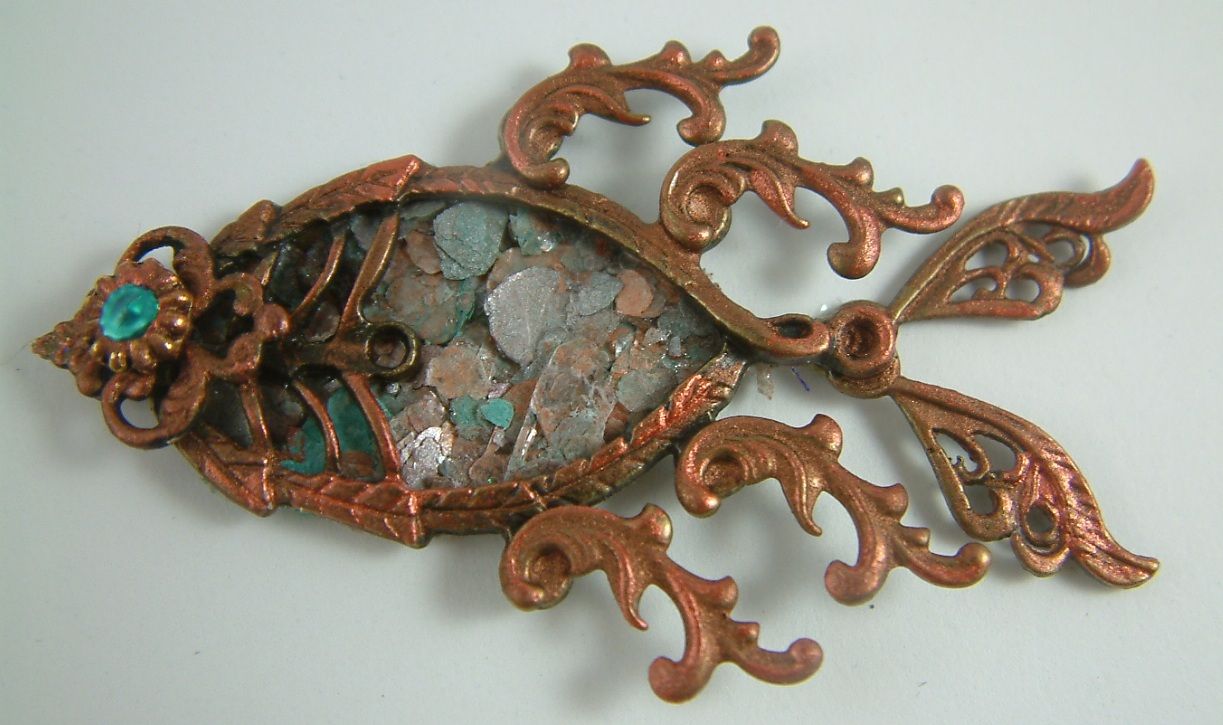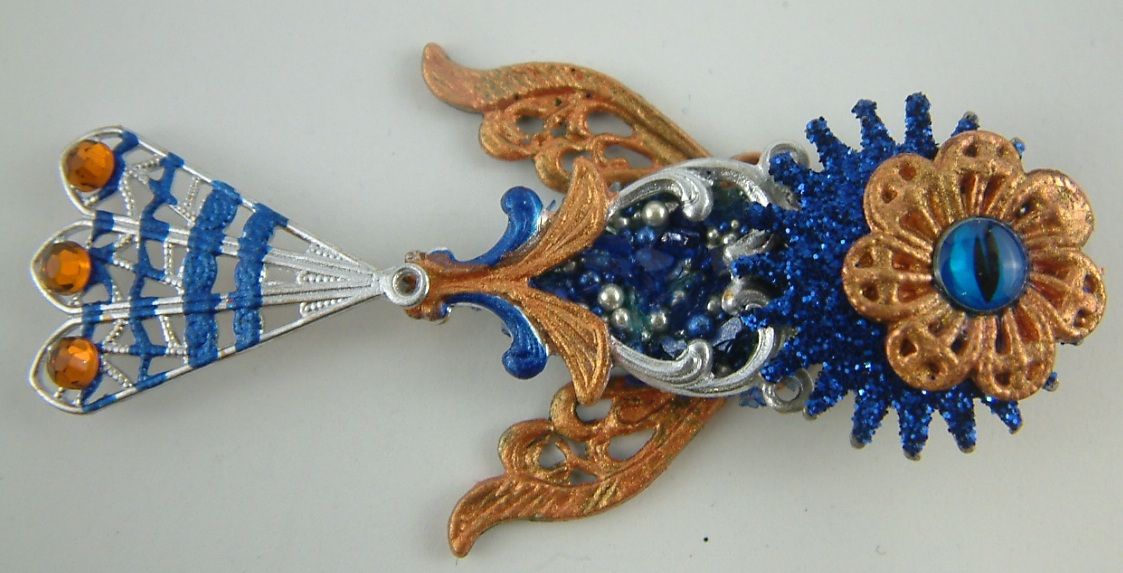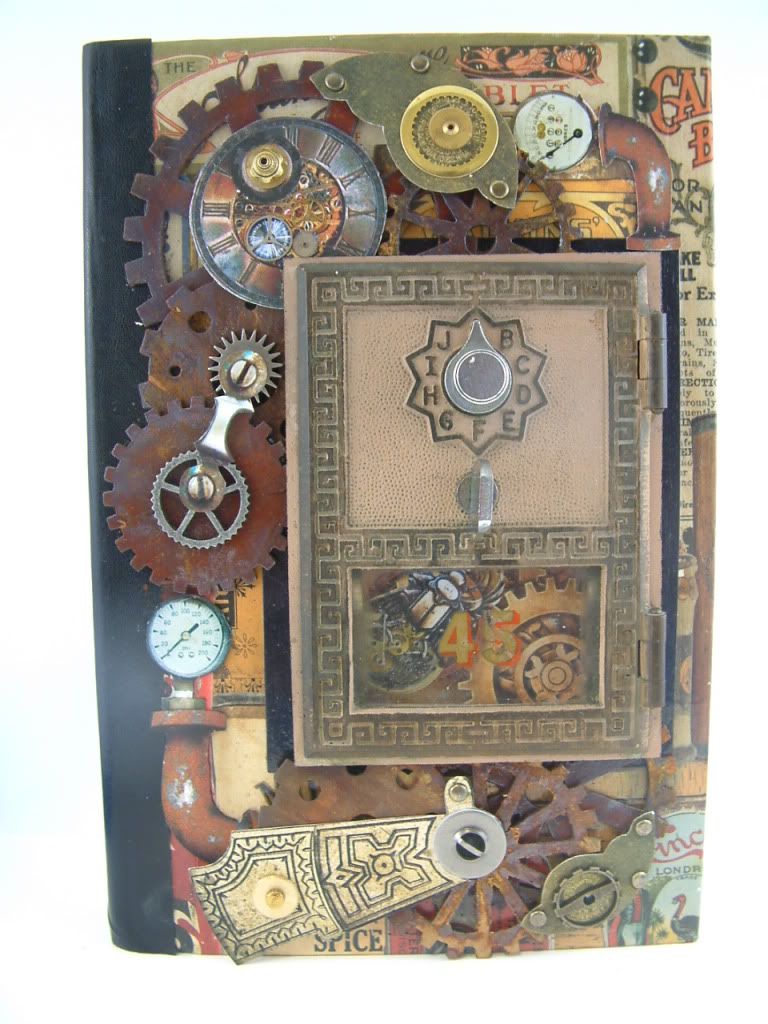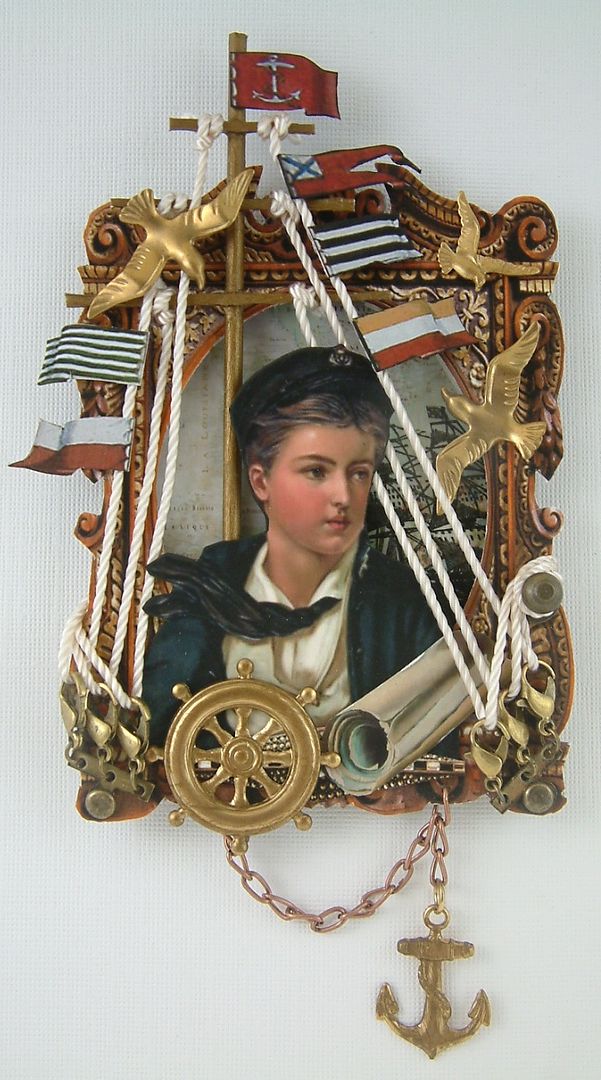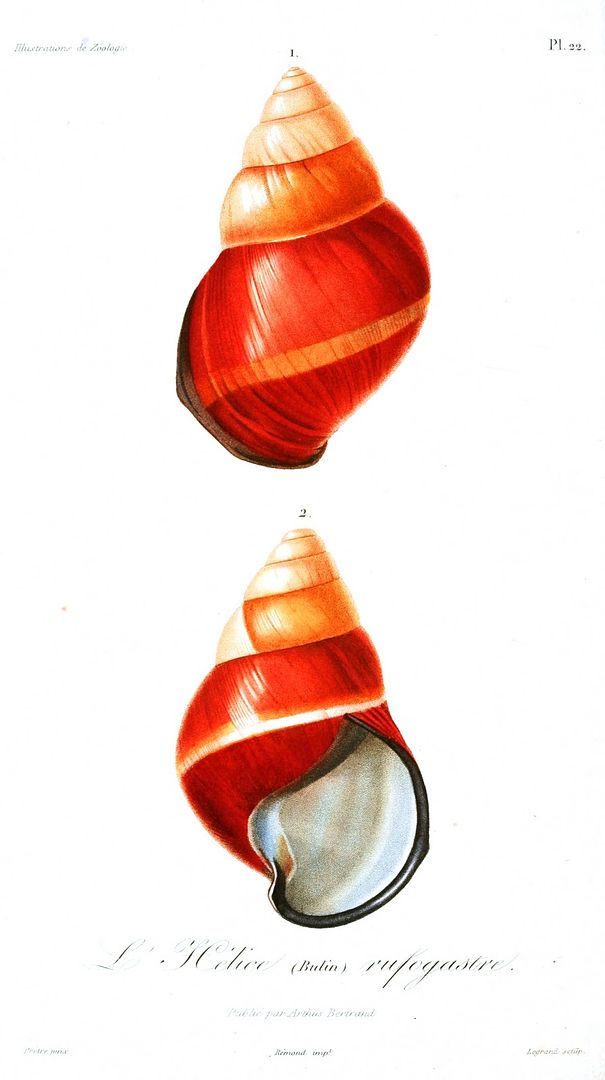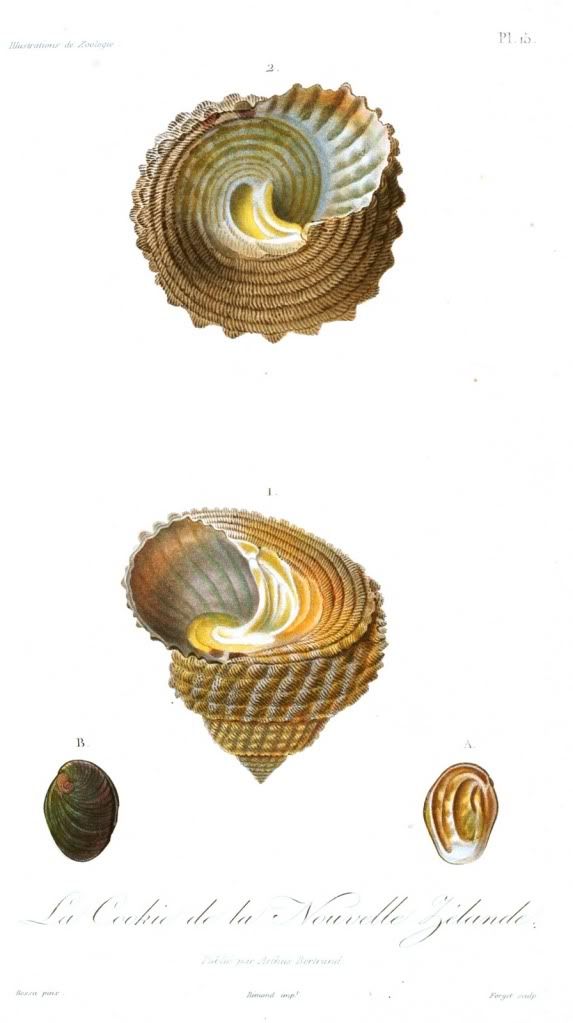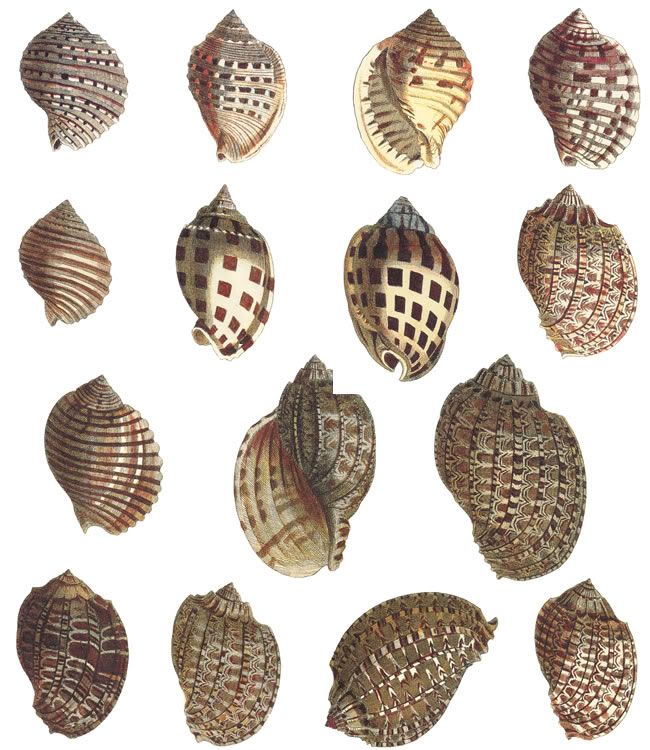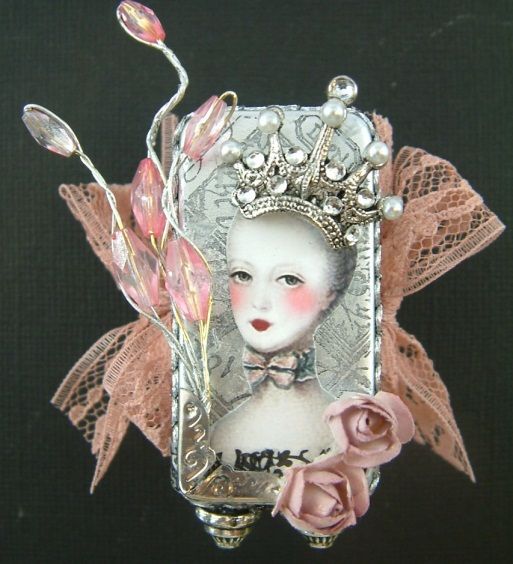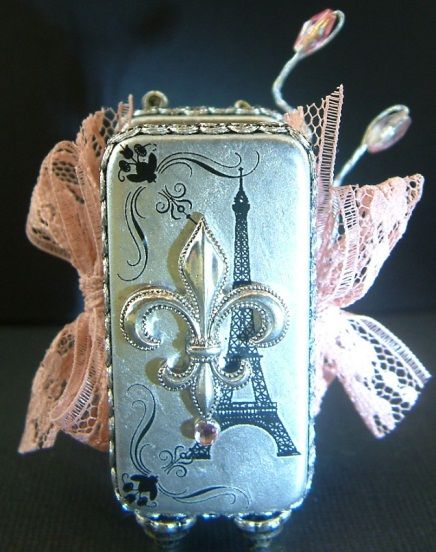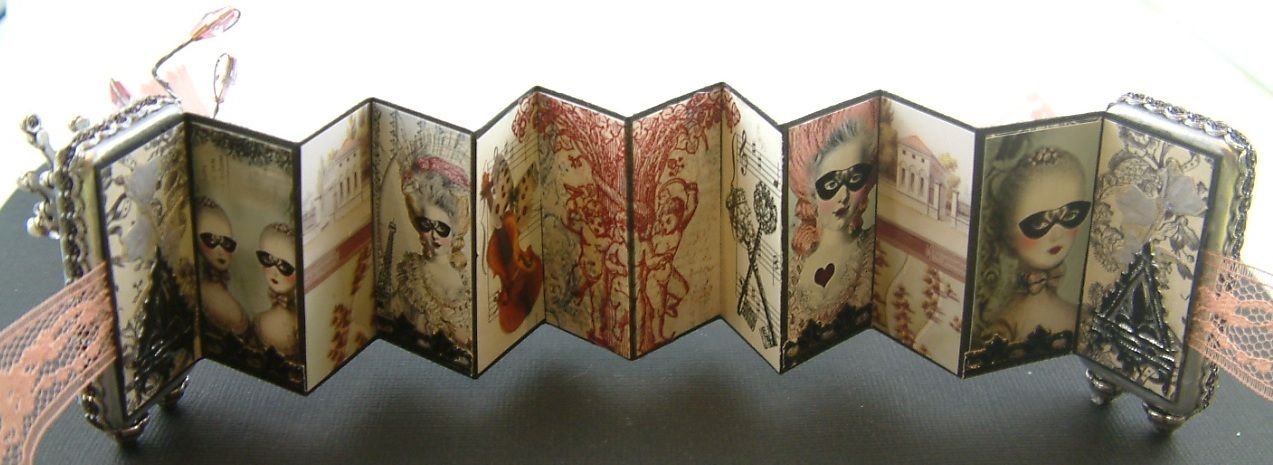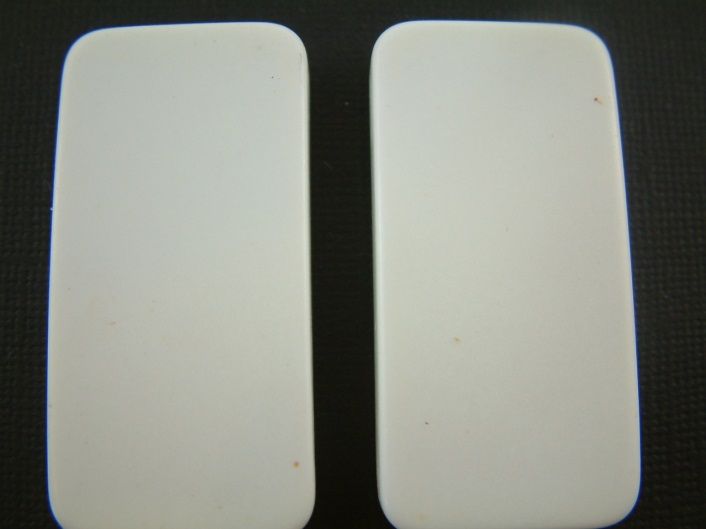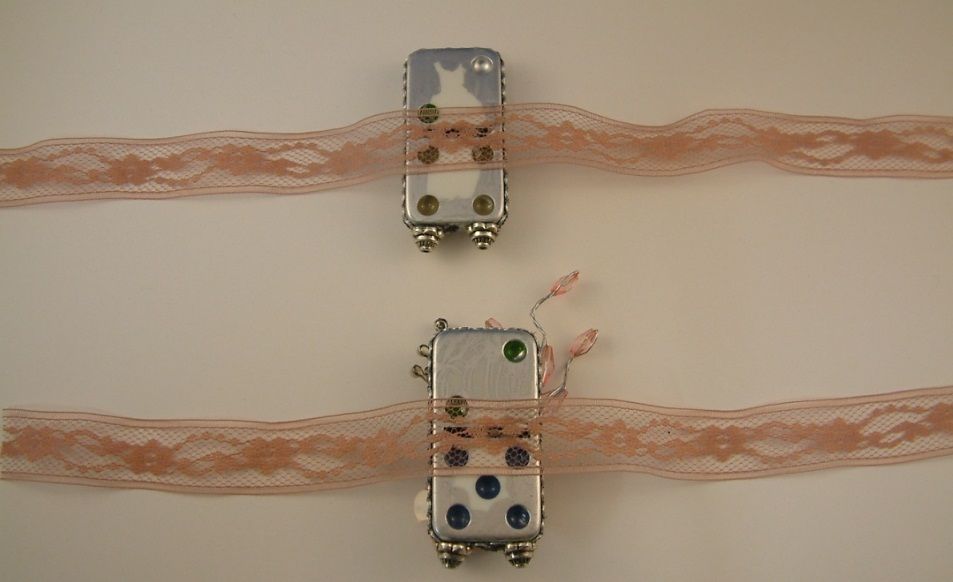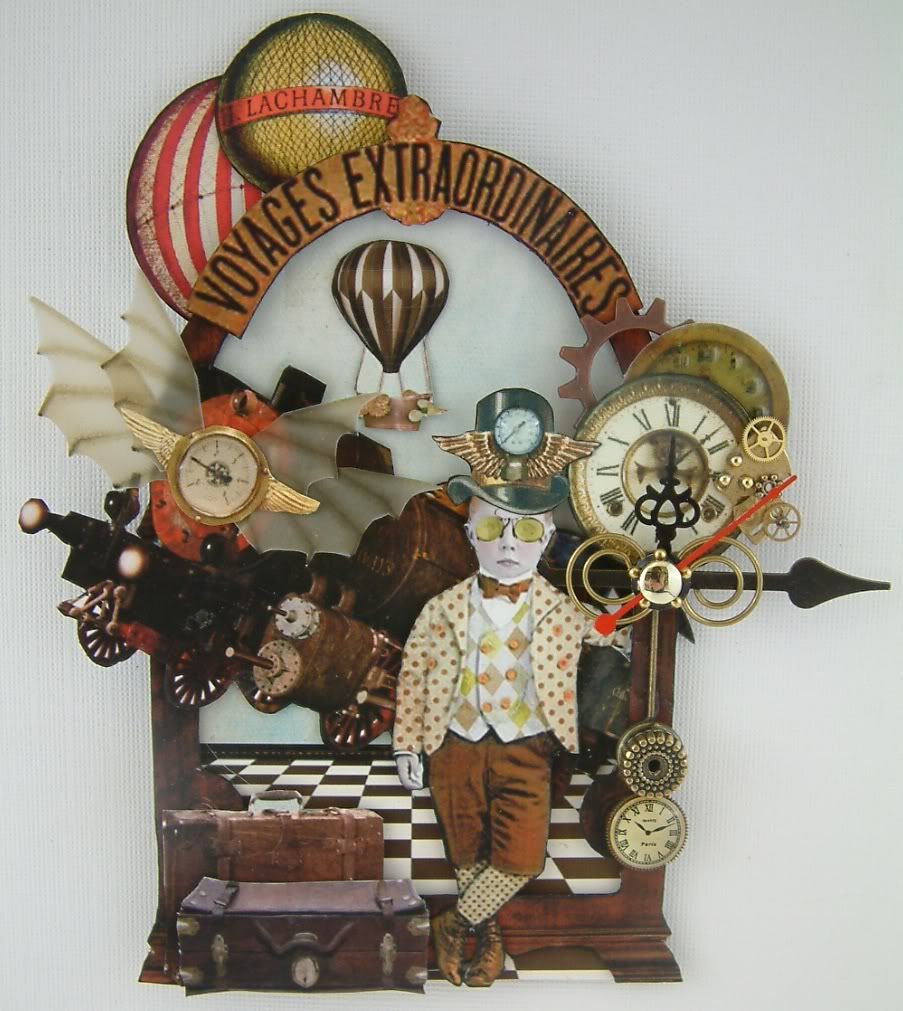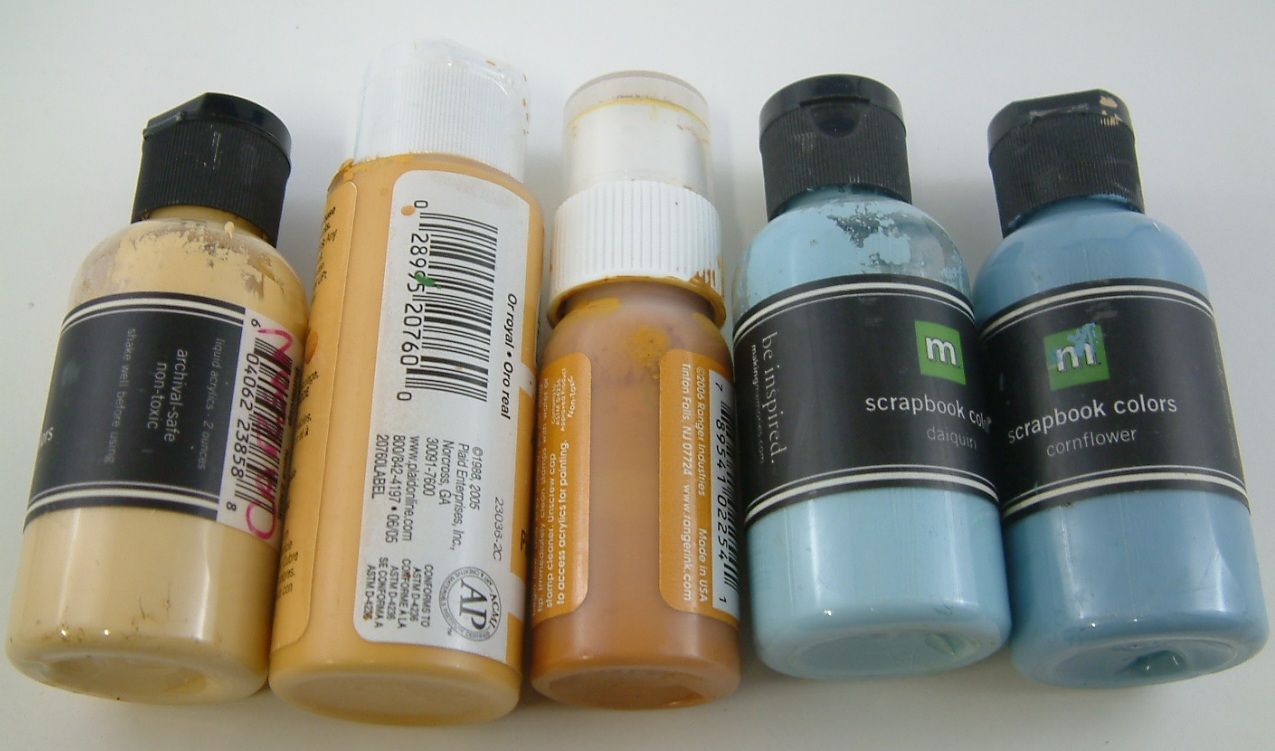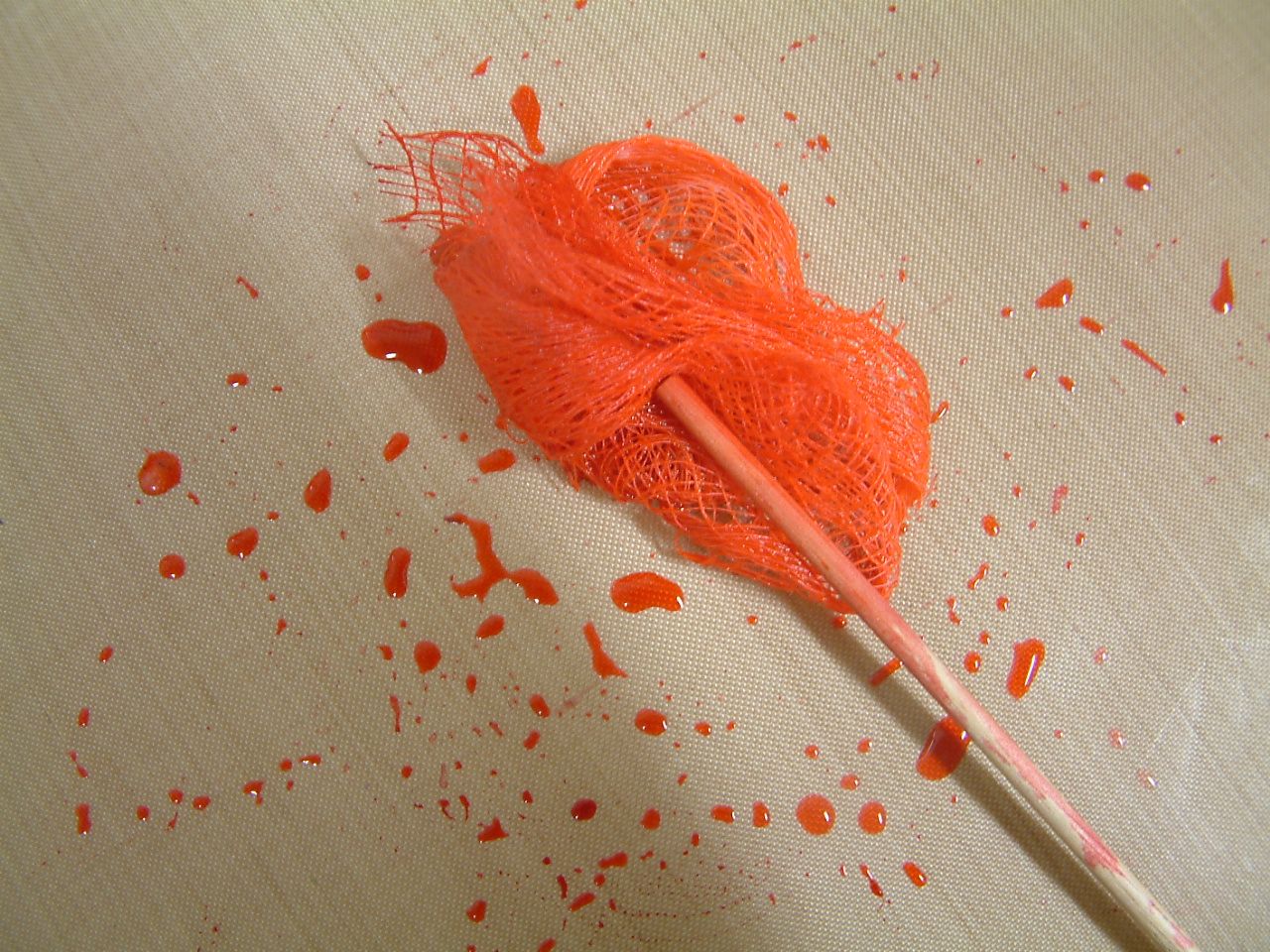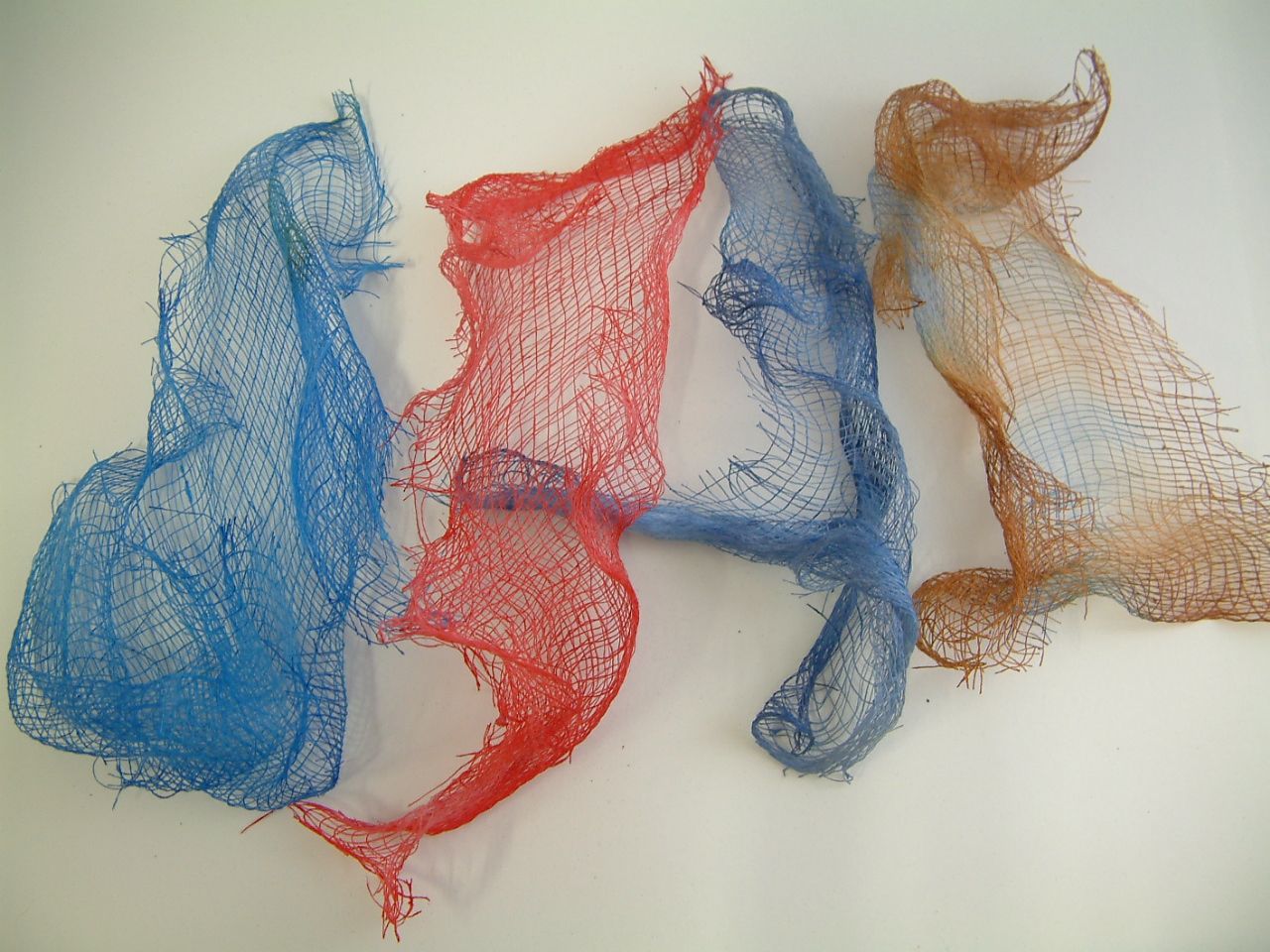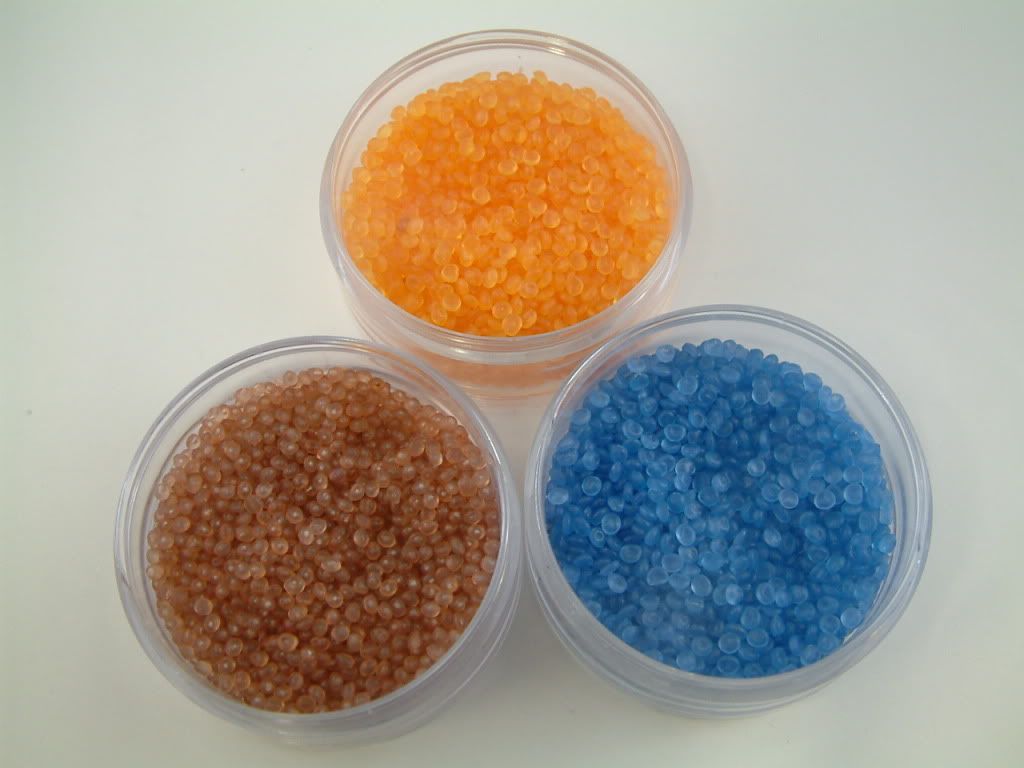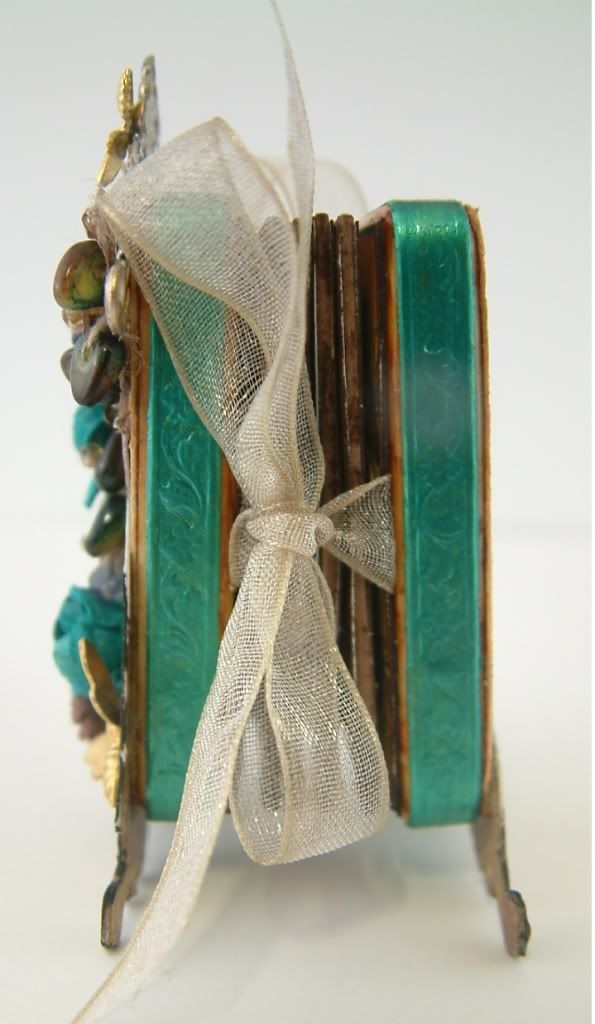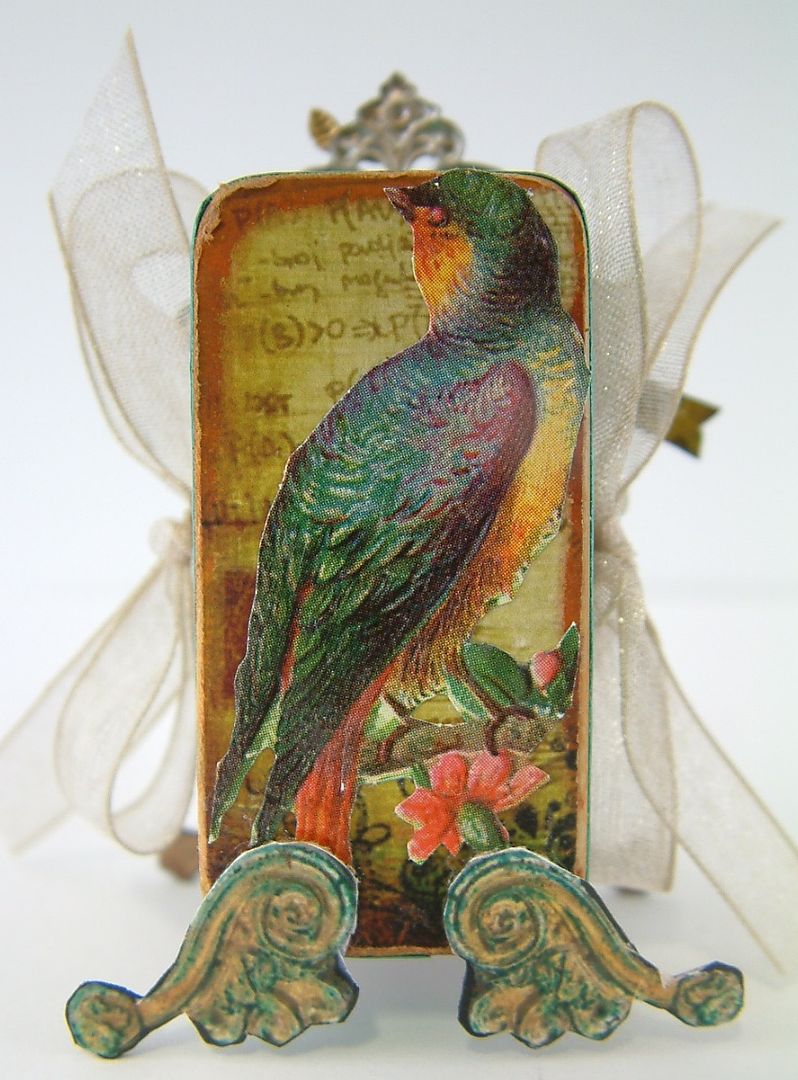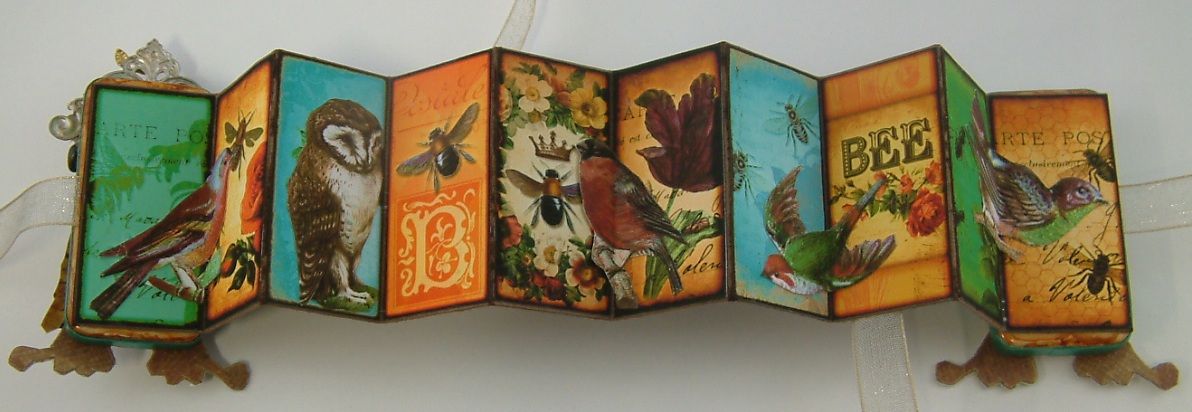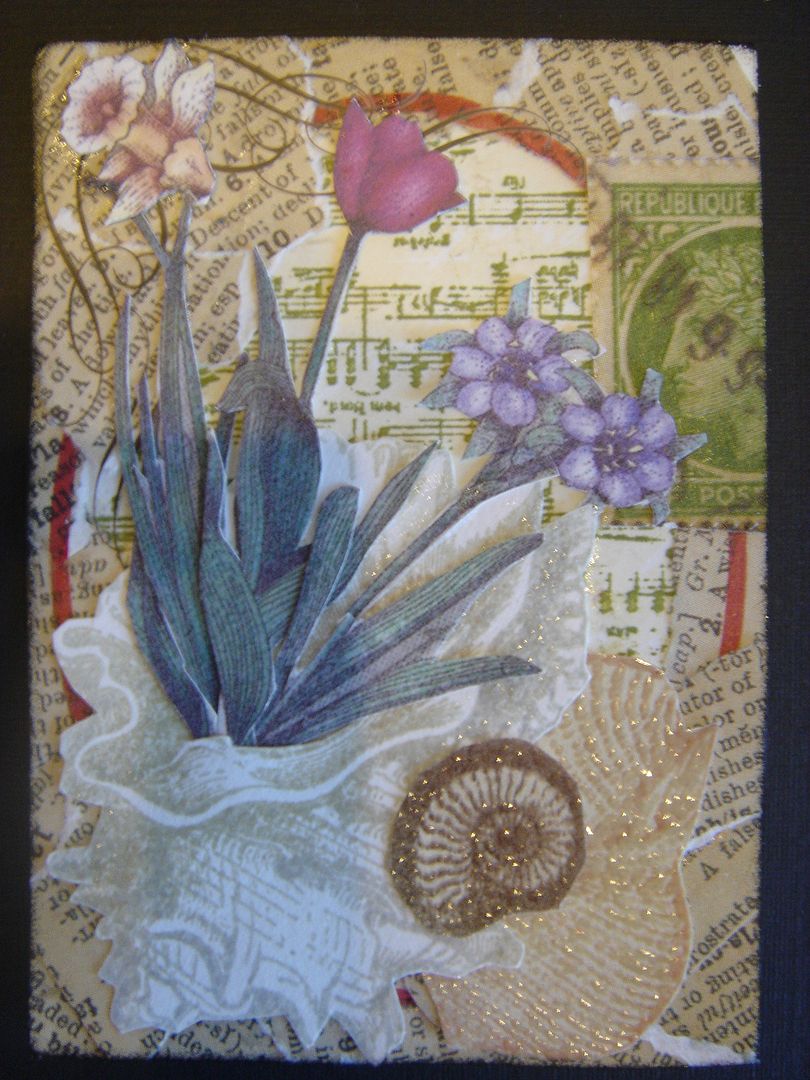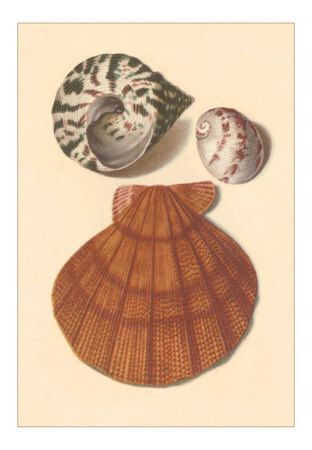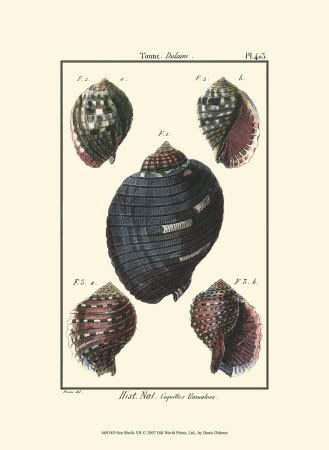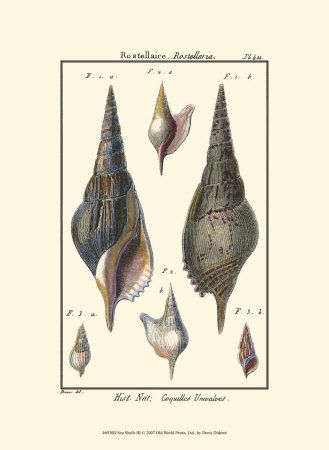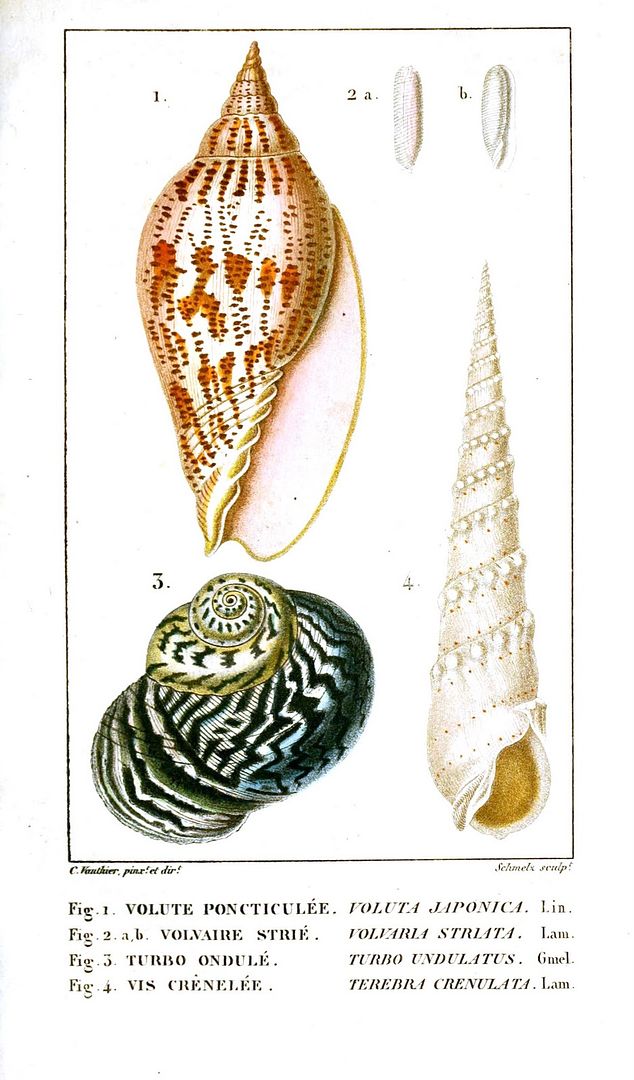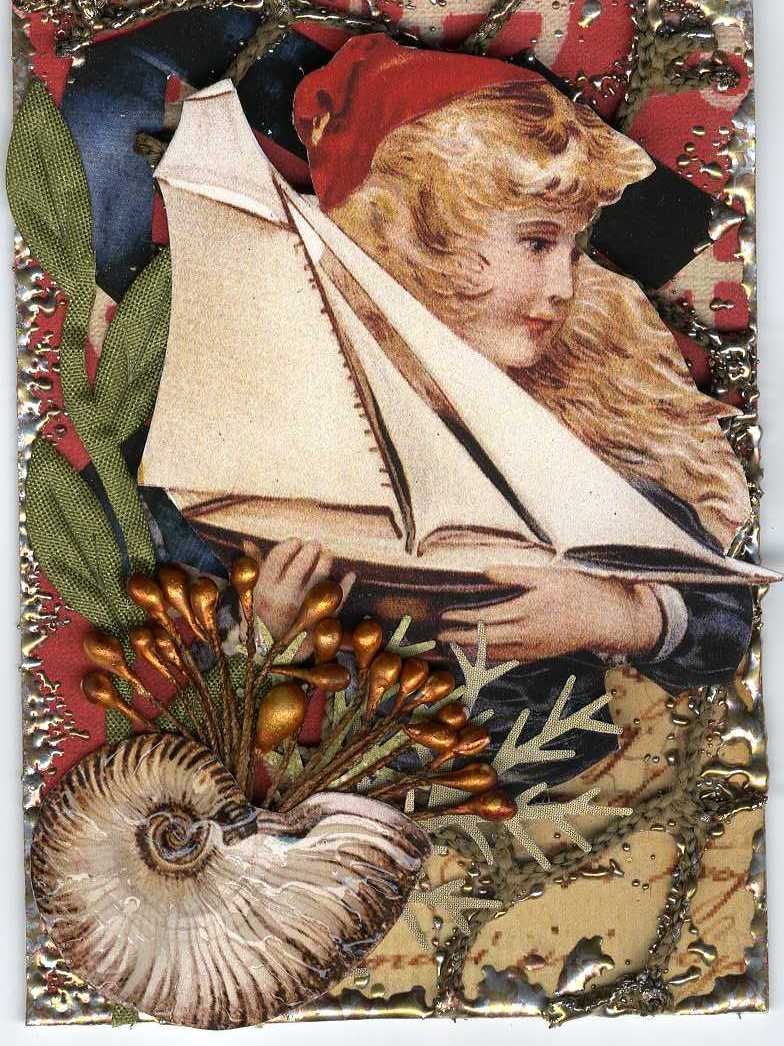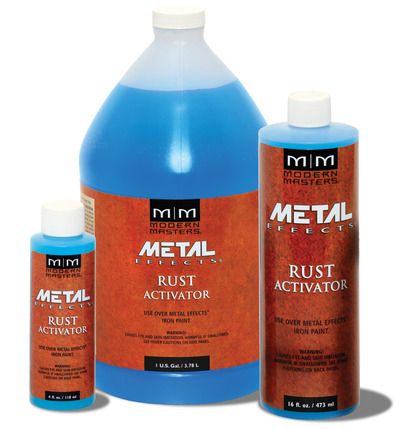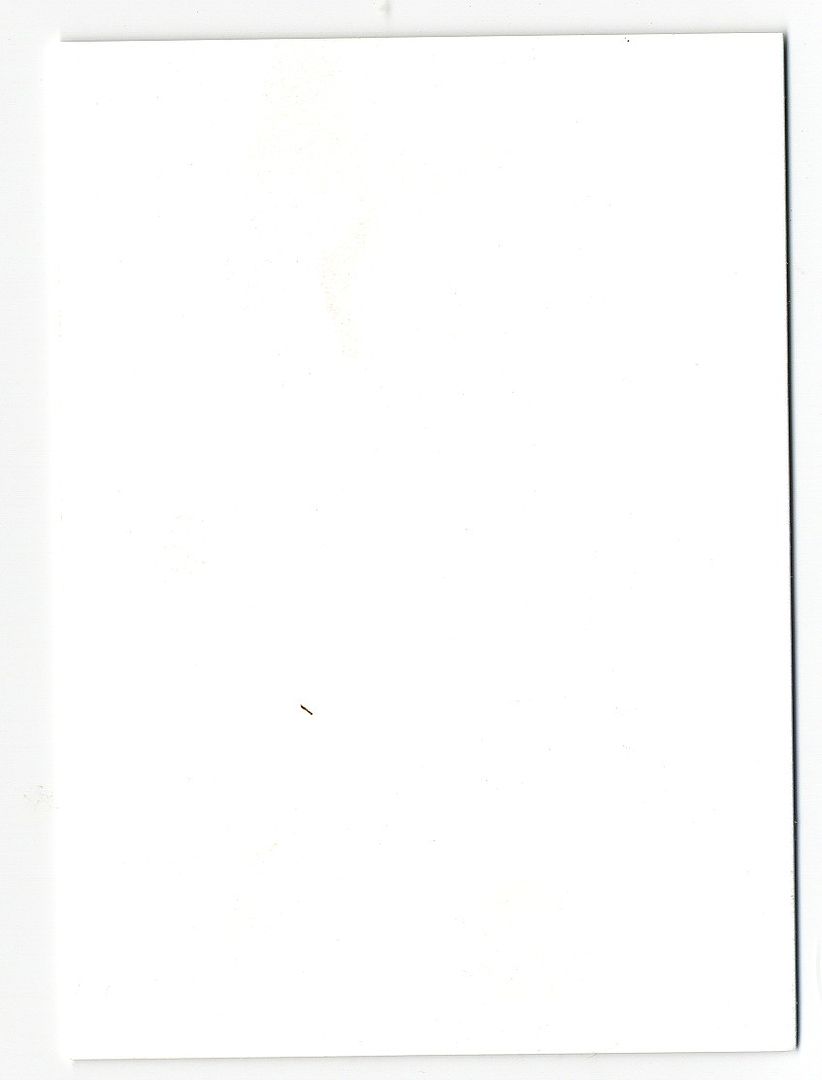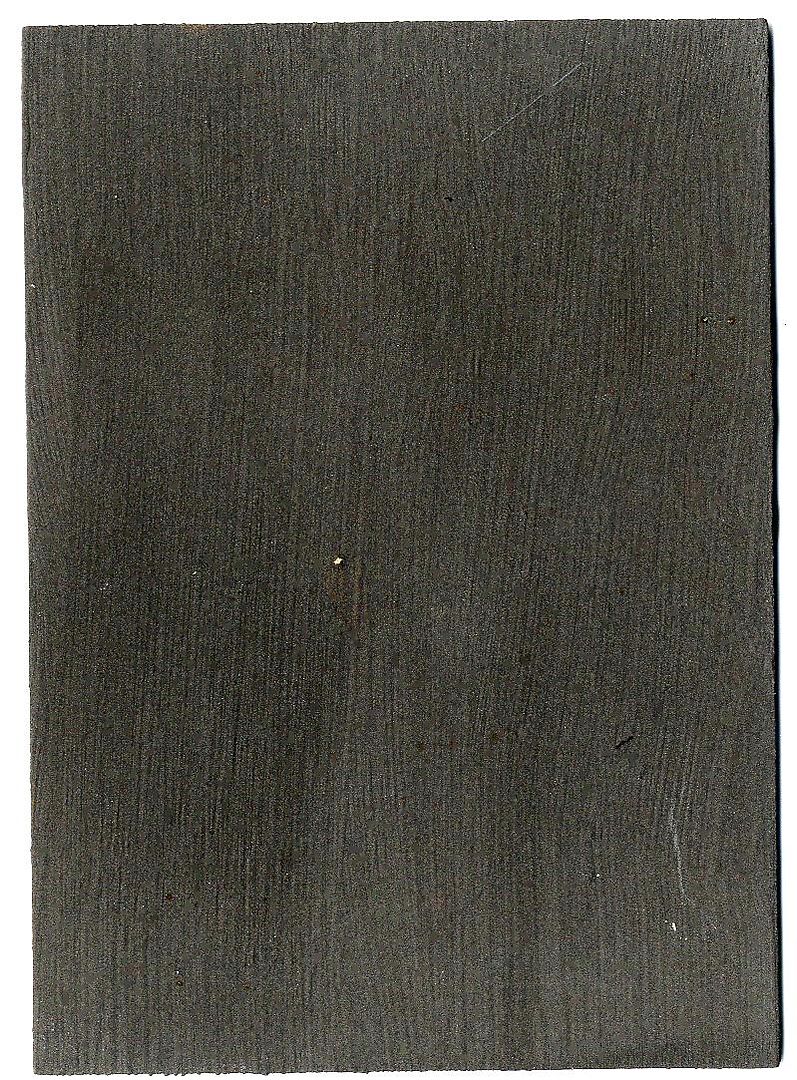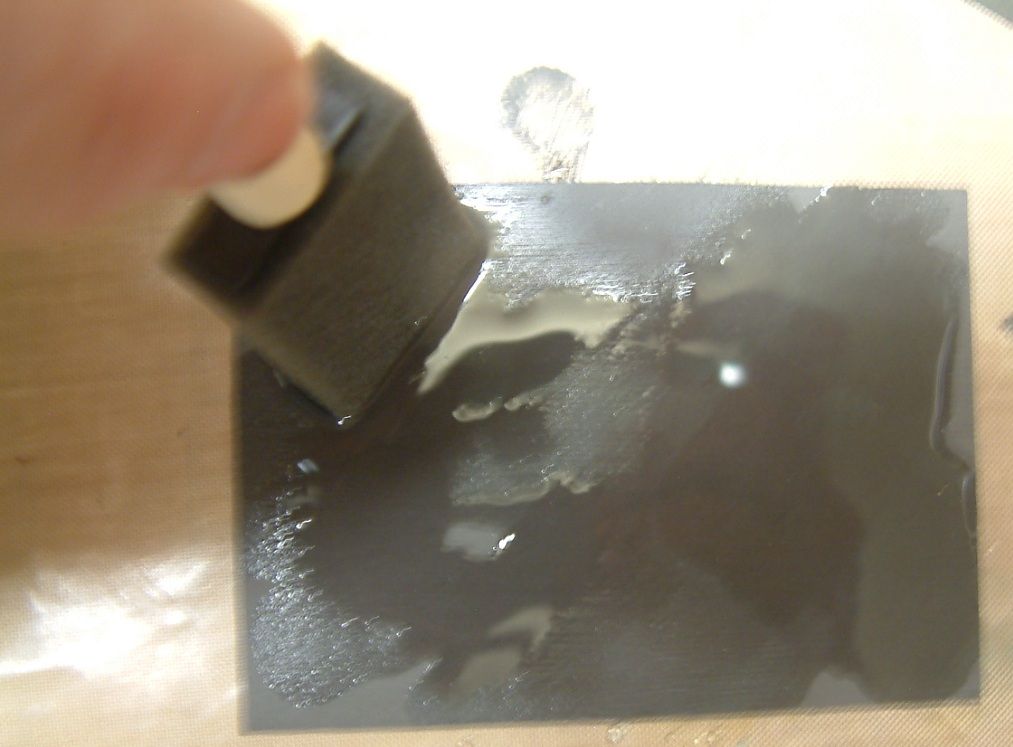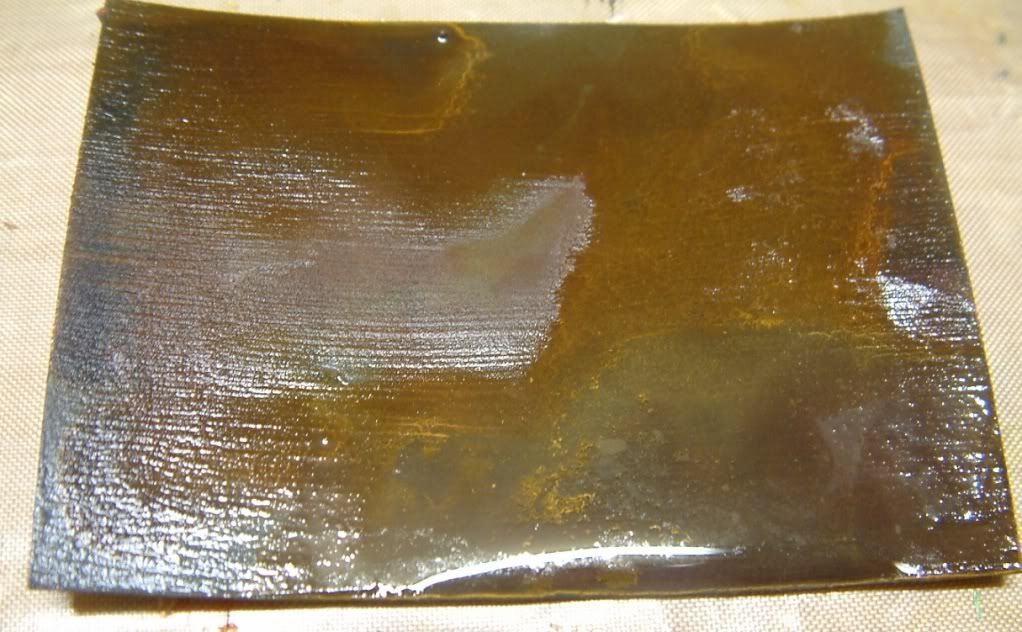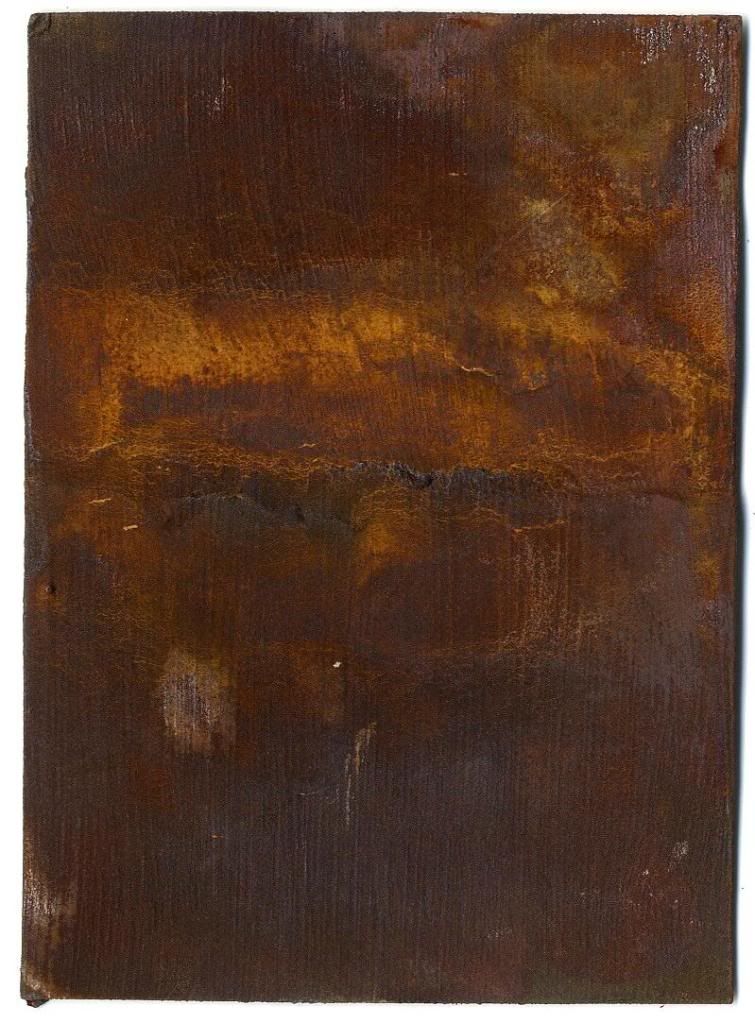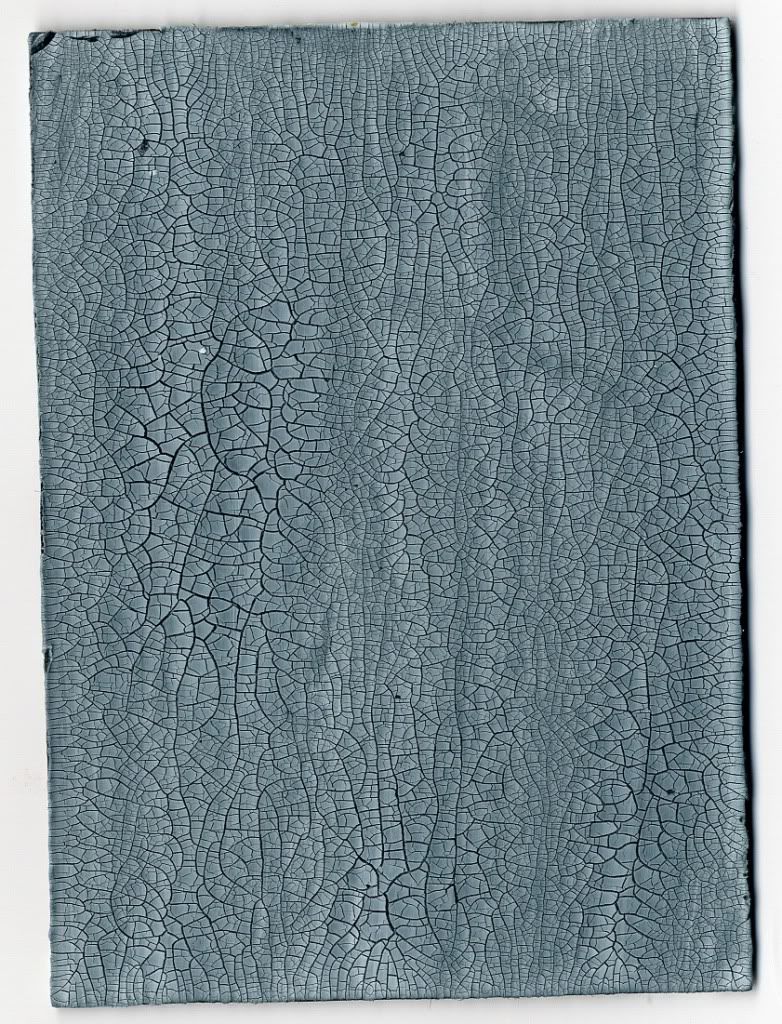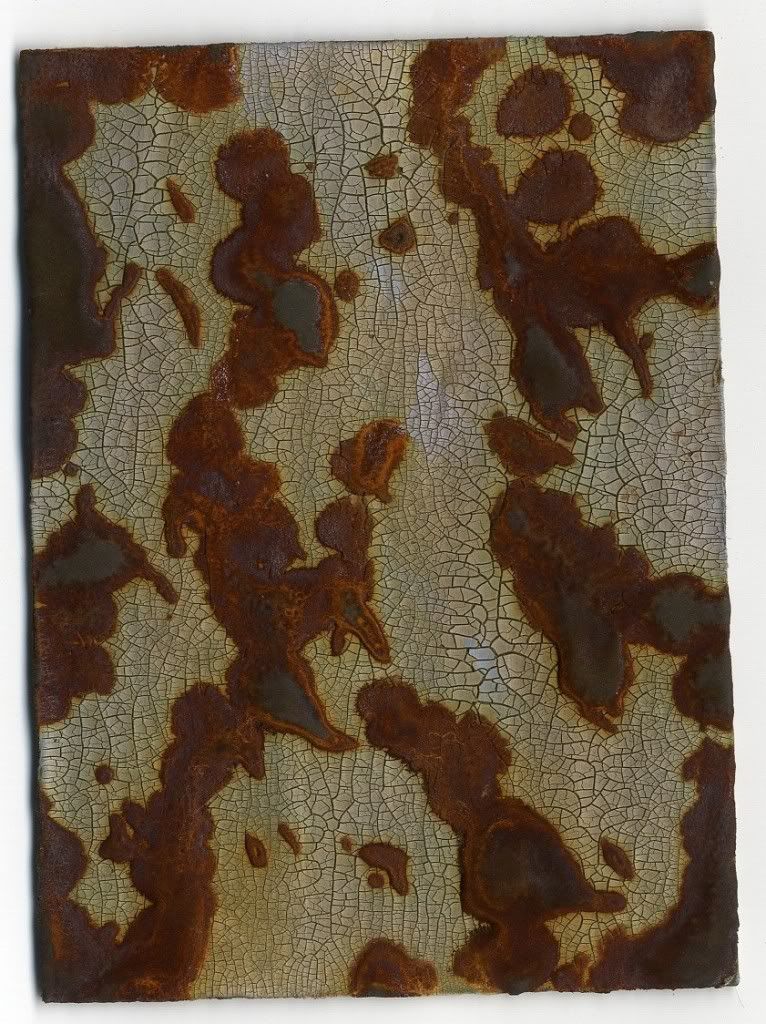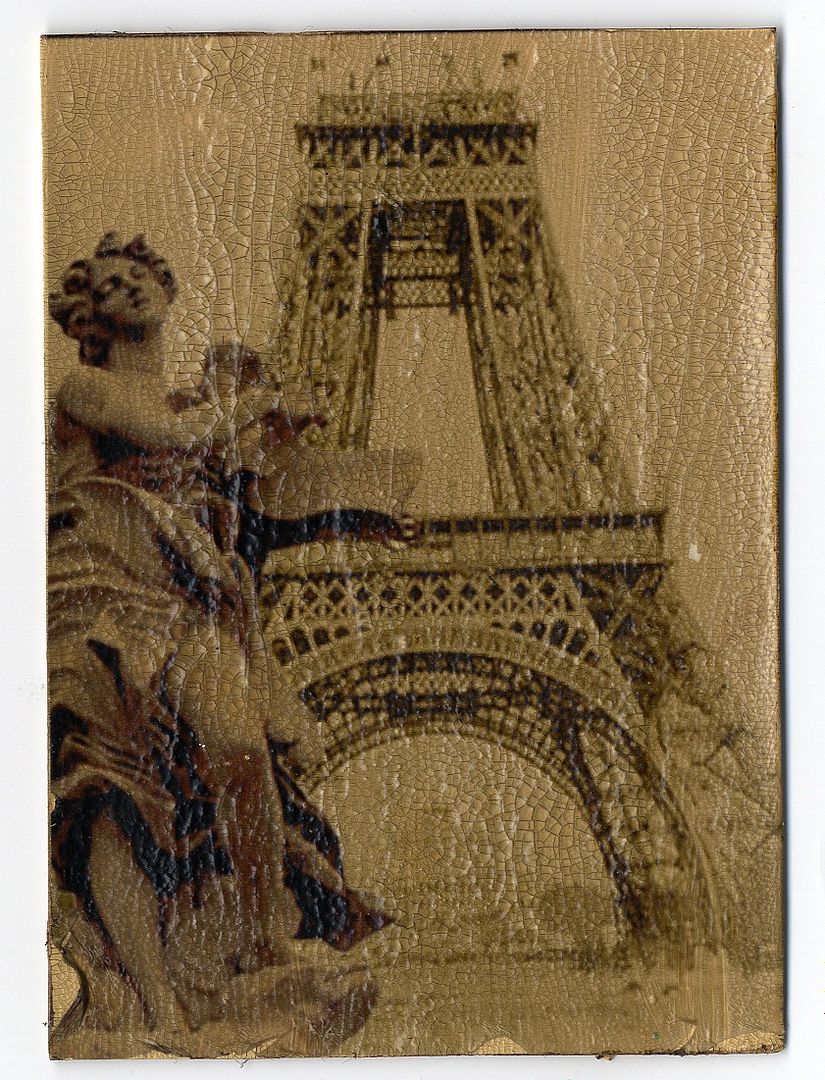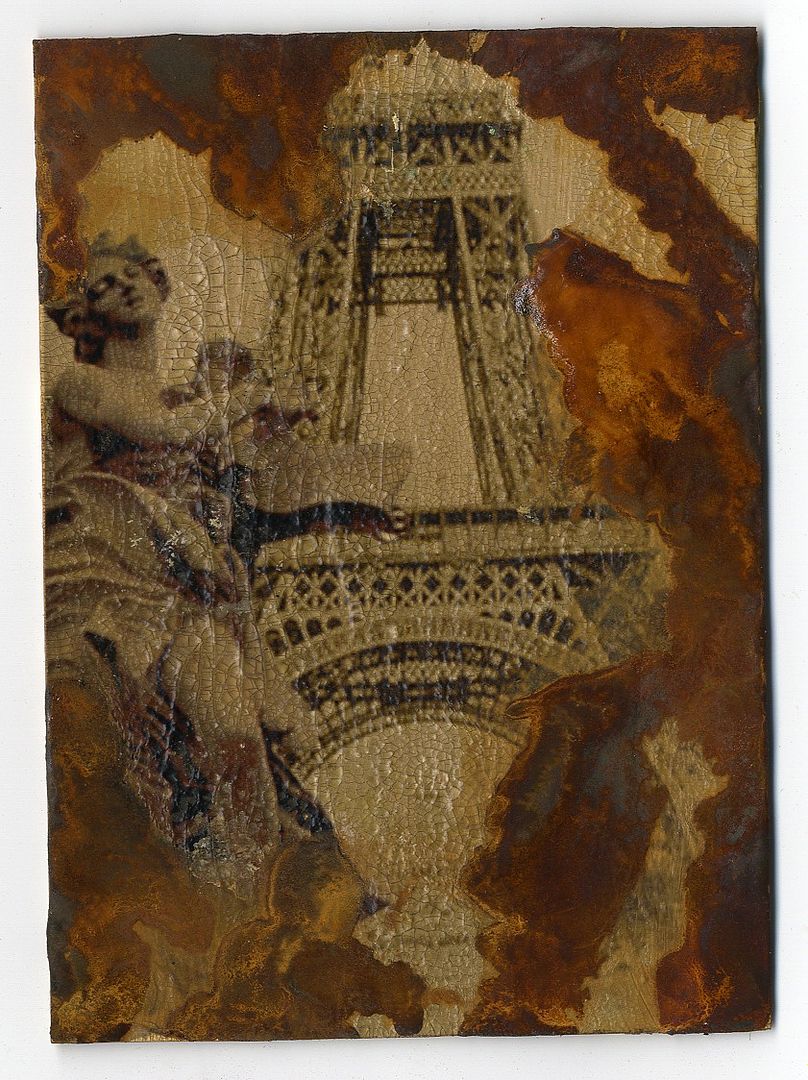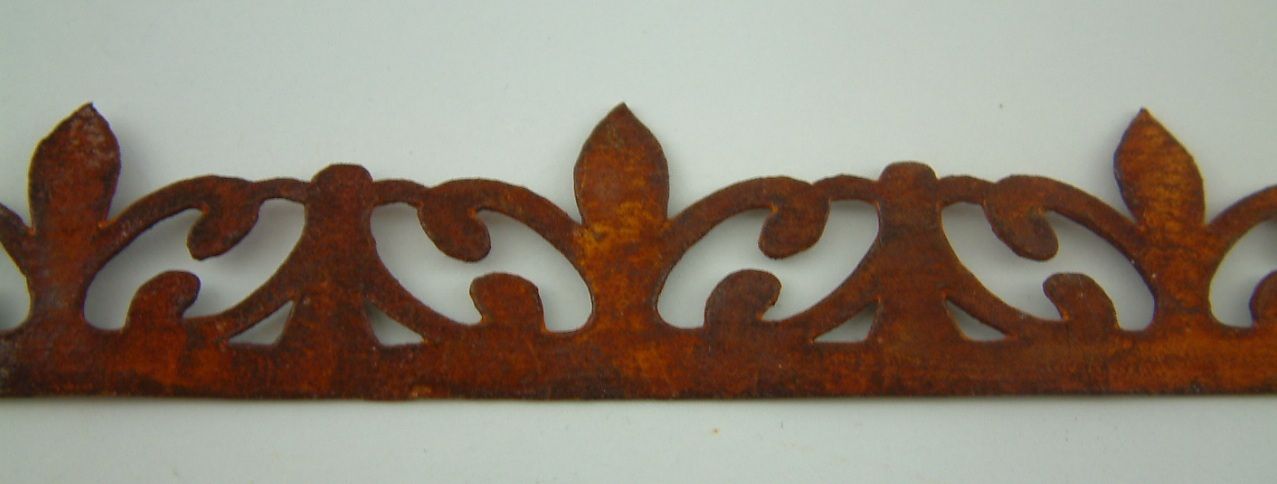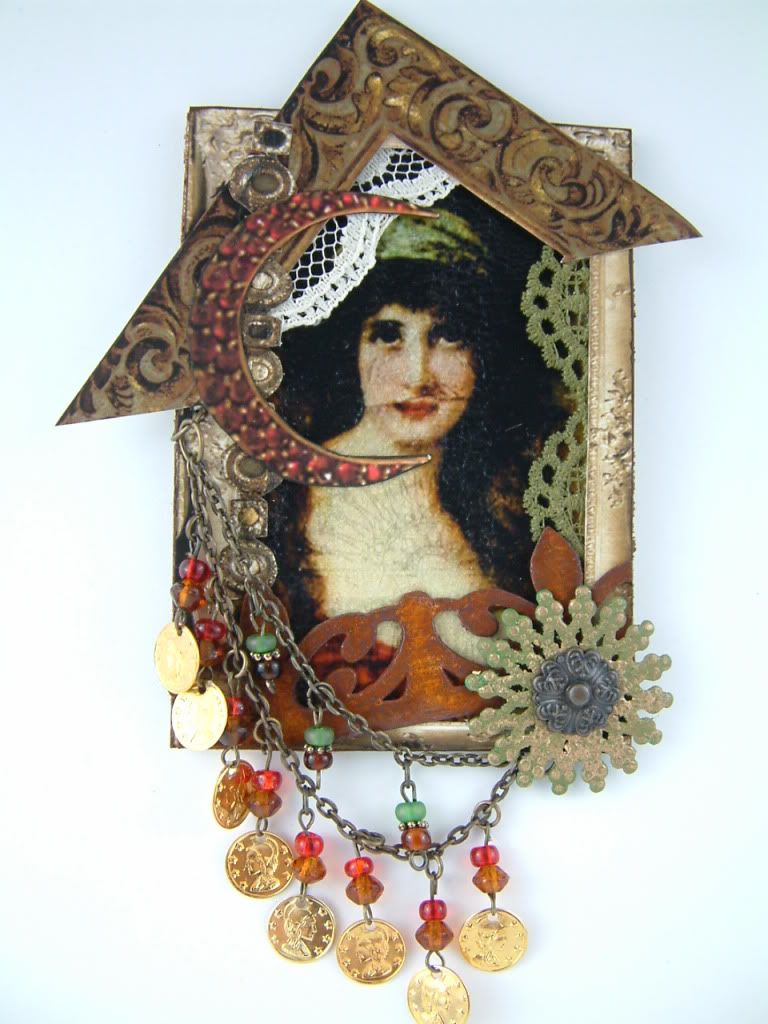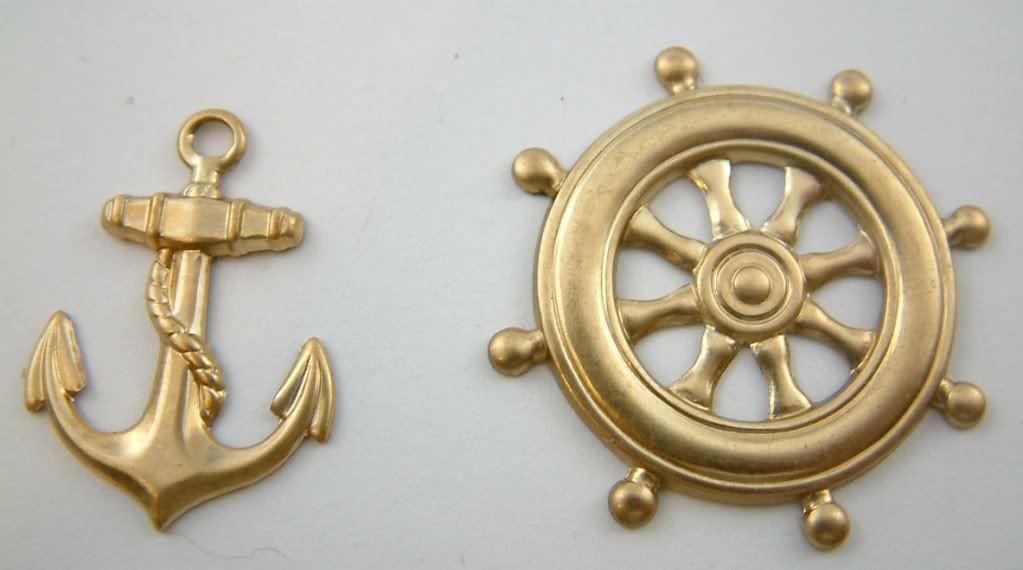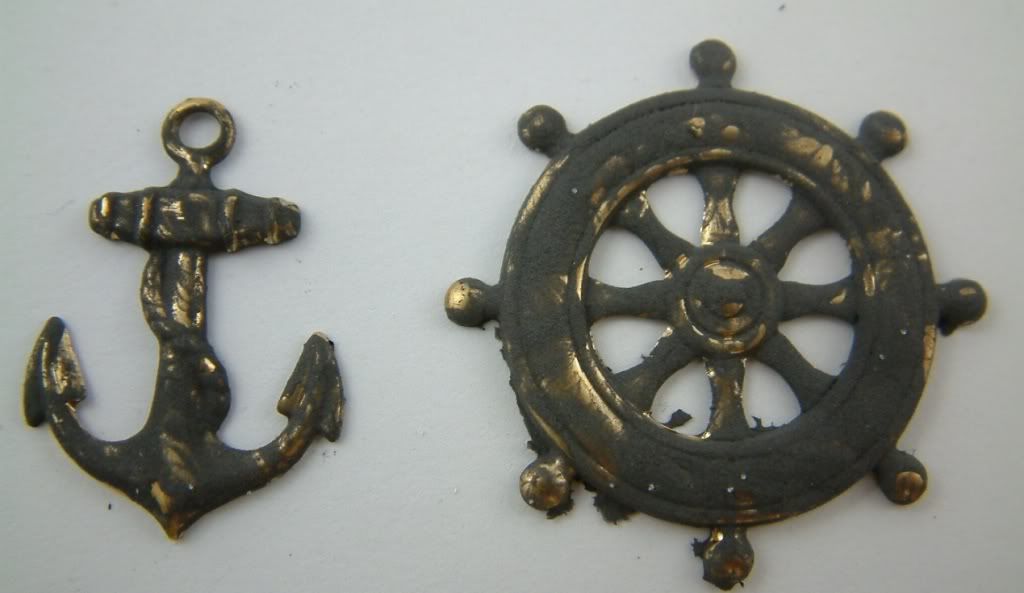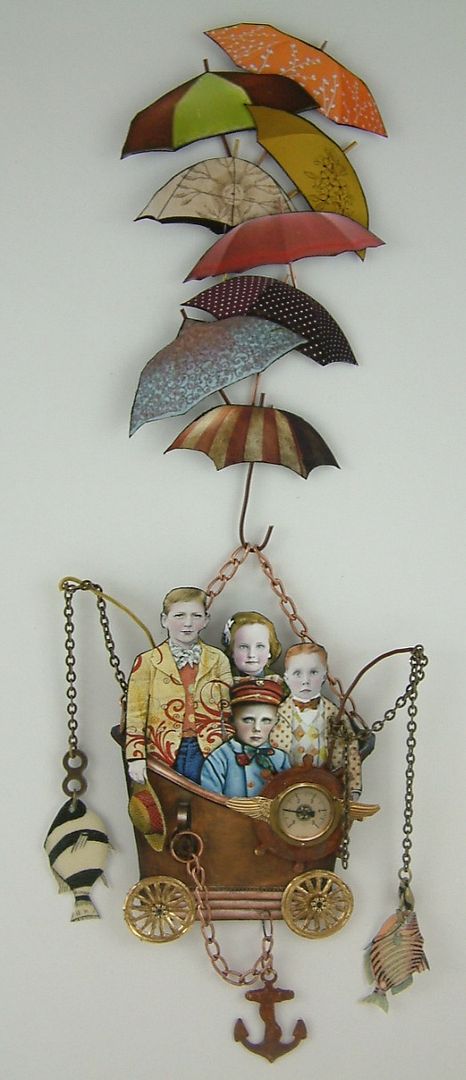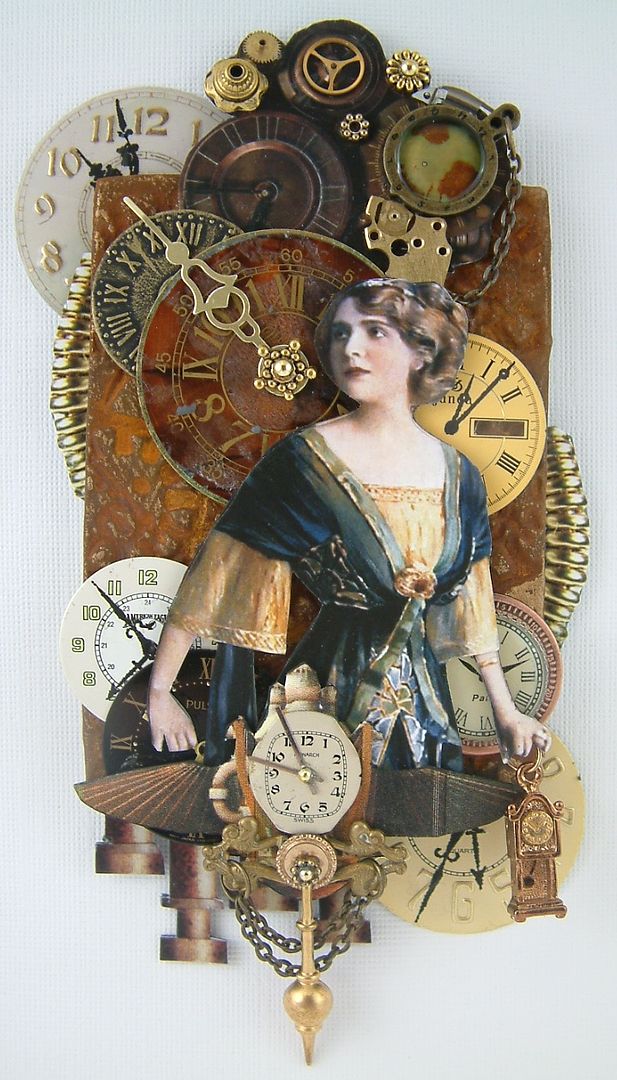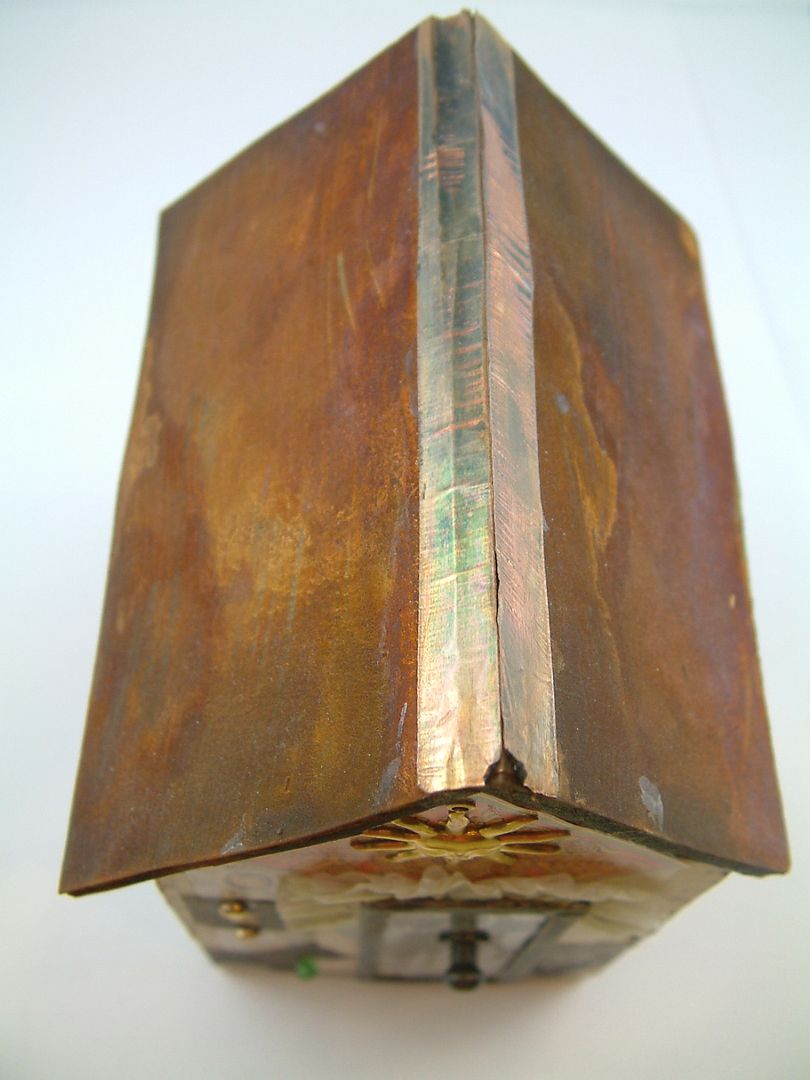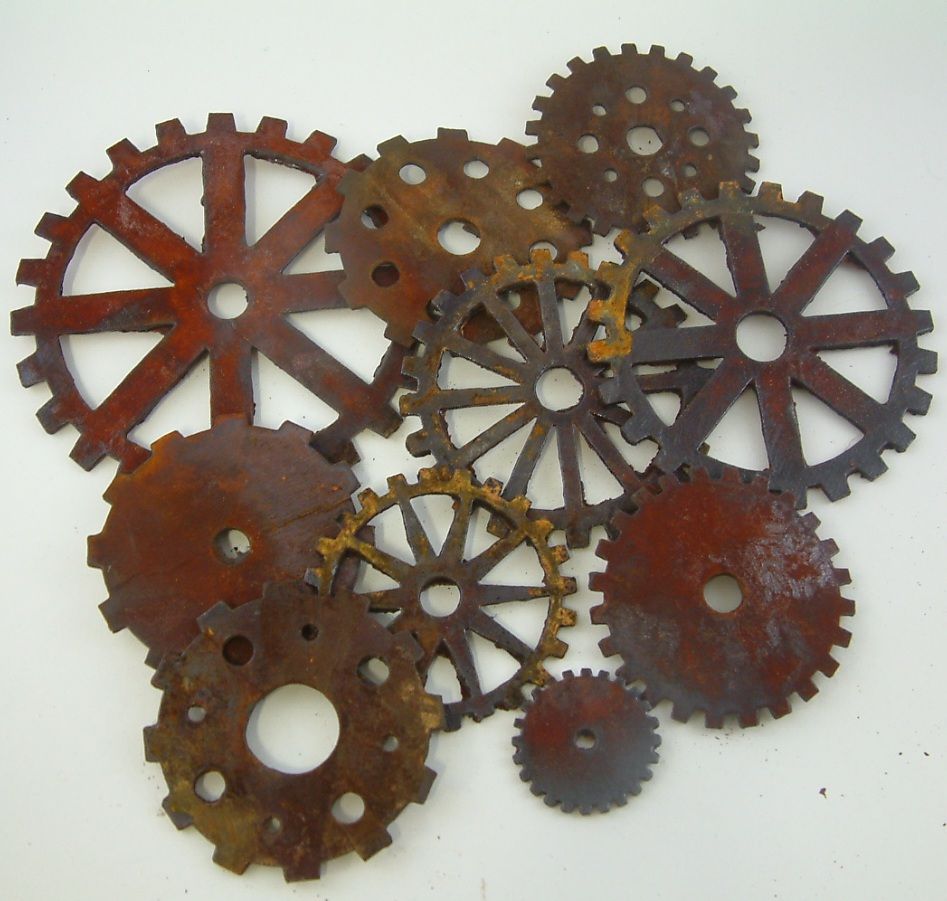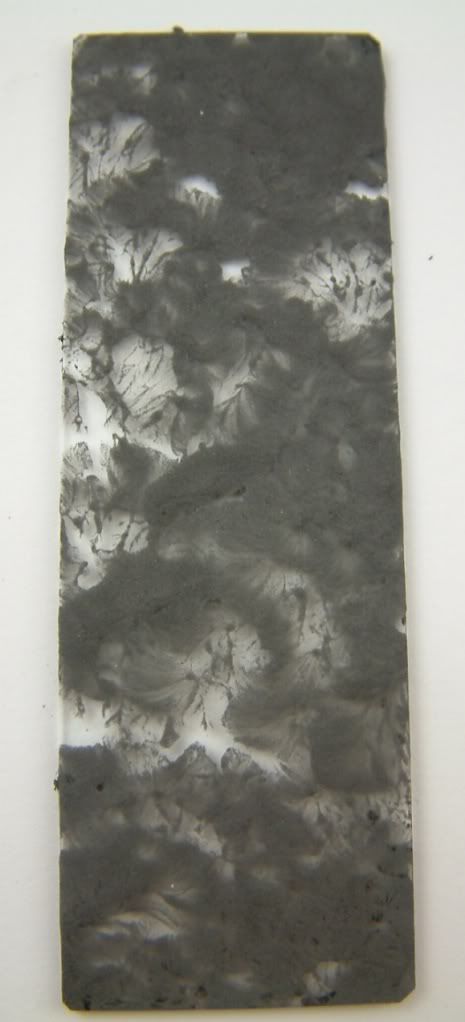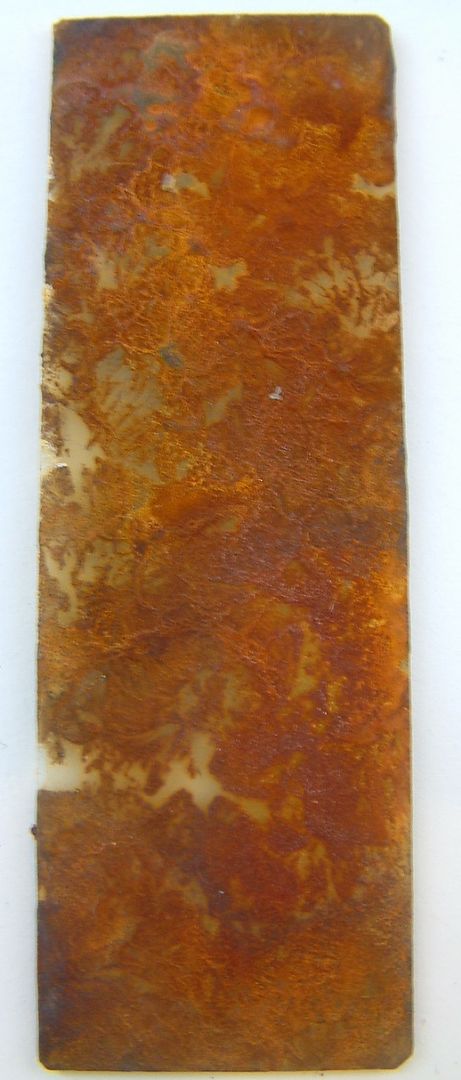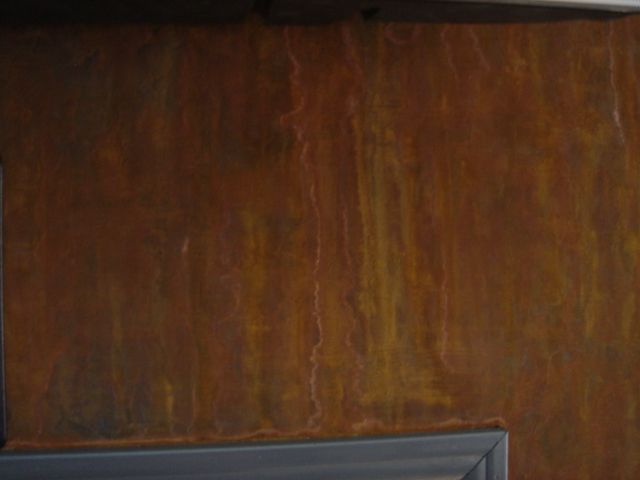Welcome
I love answering your questions. If you ask them in the comment section, I have no way to answer you (if you haven't heard from me, that is why). If you use the "EMAIL ME" in the left column of this page, I will be able to respond to you. You can also use it if you want to be added to my newsletter. Laura
Wednesday, August 31, 2011
Monday, August 29, 2011
Steampunk - Altered Book Cover
I started by collaging papers on the cover and adding leather to the spine. In the center of the book is a vintage mailbox door. I cut a hole in the cover and in the first several pages of the book in order to insert the door. The mailbox door and combination work or would work if I could remember the “safe place” where I put the combination. The larger gears are rusted chipboard. To see the tutorial on rusting objects click here. I haven’t done anything to the inside of the book. I think I’ll just use it for décor.
Monday, August 22, 2011
Saturday, August 20, 2011
Thursday, August 18, 2011
Tutorial - How to Make an Accordion Fold Domino Book
Here comes a tutorial just in time to have fun for the weekend. First, I must give credit to Holly Moore whose blog is Paper Pieces of Me. Holly hosted a domino book swap in the Marie Antoinette Mail Art group and that’s where I learned to make these books.
What you will need:
- Two dominos. In the example my dominos measured 1” x 2”.
- Thin ribbon or lace
- Cardstock or heavy decorative paper.
- Embellishments (for the dominos)
- Paper images
Front of the finished book
Back of the finished book
Side of the finished book
Decorate the fronts and sides of your dominos (not the back). You can use alcohol inks, Staz-On ink, paper, ribbon, trim, rub-ons and anything else that will stick to a domino. In the example I painted my dominos with silver alcohol ink. If you are painting your dominos, be sure to paint the edges and a little bit of the back side. I then stamped my dominos, applied rub-ons and paper. Lastly, I glued on my dimensional embellishments and trim around the edges.
Blank Dominos
Decorated Dominos
Step 2
Glue a strip of ribbon to center of the backside of each domino. The ribbons are used to tie the book closed. I used extra ribbon then trimmed the length after tying the book closed.
Step 3
Cut a strip of cardstock or heavy decorative paper 1 7/8” x 9”. This measurement is based on dominos that are 1” x 2”. If your domino measurements are different you will need to cut your paper a different size. The point is to cut the height 1/8” shorter than the height of the domino and long enough to fold the strip into 10 sections so that each folded section is 1/8” shorter than the width of the domino. The purpose of deducting a 1/8th of an inch is to keep the folded book from hanging over the edge of the dominos.
Strip of cut cardstock
Step 4
Score the paper every 7/8” (this assumes the domino is 1” wide). This is to help you fold the paper like an accordion. You should be able to score the paper 10 times. Fold the scored paper. You should have 10 panels with a little bit extra on one end. Cut off the extra bit. Decorate the front and back. Don’t use bulky embellishments or the book will be hard to close.
Strip of cardstock scored and folded (be sure to cutoff the extra at the end).
Front or inside decorated
Back or outside decorated.
Step 5
Glue each end of the accordion folded paper to the inside of each domino (on top of the ribbon.
Close and tie your book and you are finished!
Monday, August 15, 2011
Creatures of the Deep
To create the ocean, I mixed sand with translucent embossing paste. I divided the mixture in half and colorized each half with different colored alcohol inks (green and blue). To create waves, I applied each of the colorized mixtures to the card using a popsicle stick in a swirling motion. Once the mixture was dry, I used the tip of my finger to lightly brush cream acrylic paint on to the highest tips of the waves to create the appearance of foam. The ship is a rub-on transfer I created using Grafix Rub-Onz transfer film. The maps at the top of the card are made of vellum.
Friday, August 12, 2011
Voyages Extraordinaires
After I created the steampunk inspired blog header I decided I also wanted to create a mixed media art piece along the same lines. The wings on the train are made of vellum. The image of the boy is from Land of Nod Studios. I’ve just love him and I’ve used him in other pieces. I digitally added the glasses. The hat, wings and gauge are constructed separately. The clock is made of all kinds of metal and paper bits and pieces.
Tuesday, August 9, 2011
Beachcomber
The inspiration for this card came from the headpiece in the woman’s hair. I decide to try to replicate its texture and thought of using cheesecloth.
Next, I dyed strips of cheesecloth using Ranger Alcohol Inks. I squired the ink onto a non-stick craft sheet, added a little Ranger Alcohol Blending Solution, and dipped the cheesecloth into the ink moving it around with a wooden skewer. You can add more ink if you don’t feel the color is dark enough. I used rubbing alcohol (as it’s cheaper than the Blending Solution) to wipe off the craft sheet. I repeated the process with other colors. To create the background I dry-brushed chipboard backed white cardstock with yellow and blue paint. I went from light to dark starting with the lightest yellow and ending with the darkest blue.
I used Gel Matte Medium to glue the image to the background. I cut the dyed strips of cheesecloth into small pieces and used the Gel Matte Medium to clue the pieces to the card.
For embellishment I punched branches from cardstock and covered them with various colors of microbeads. I glued the branches to the bottom of the card. I also added colored pebbles and sequins.
The yellow sparkly material at the bottom of the card is called “Elements-Earth Textures”. I think it is some kind of dyed dirt and glitter mixture. You can purchase the product at the Glitter Art Institute.
Sunday, August 7, 2011
Birds and Bees Domino Book
So how much stuff can you cram onto the face of a domino? Well, apparently a lot. I first painted the dominos with caramel alcohol ink. Next, I added decorative paper to the front and back dominos. Then I added metal findings, beading, fabric and paper flowers, a metal bird and bee and two paper bees. The feet at the bottom are made of paper. I backed the paper feet with two layers of thick cardstock to give them enough support to stand. I don’t know what it is but I just like these little books need feet.
I added German scrap to the sides of the dominos. The scrap was gold so I painted it with metallic paint.
On the back is a Victorian scrap bird.
In the center of the book are lots more birds and bees.
Next week I'll post a tutorial on how to make a domino book. PS This book will be one of the prizes in this month's giveaway.
Seashells and Flowers
I’ve always loved the combination of seashells and flowers. To create the background for this card I first stamped and embossed a piece of cardstock using a rubber stamp with a music sheet pattern. Next, I drew and oval with a pencil to serve as a guide. I tore printed paper and glued the pieces around the edge of the card with some pieces slightly overlapping the penciled oval. I redrew the oval with a red marker then added as few more torn pieces. For the focal point I stamped, embossed and cutout seashells then inserted flowers. For the final touch I added a brown rub-on swirl and a postage stamp.
Saturday, August 6, 2011
Thursday, August 4, 2011
Tuesday, August 2, 2011
Tutorial – How to Rust Just About Any Surface Using Modern Masters Metal Effects
The Metal Effects product is a two-step rusting process. The process involves applying paint containing iron flakes to your project surface, then applying an acid to rust the iron in the paint. The end result is a real rusted surface not a faux paint treatment. It’s very simple and can be used on any surface to which the paint sticks. I’ve used this product on metal, glass, clay and paper. I liked the result so much I even rusted a wall in my house.
What You Will Need:
- Modern Masters Metal Effects Reactive Paint – Iron (it comes in various sizes and can be purchased at several online stores). Be sure to purchase the Iron paint as they sell other reactive paints.
- Modern Masters Metal Effects – Rust Activator (it comes in various sizes and can be purchased at several online stores). Be sure to purchase the Rust Activator as they sell other activators for other metals.
- 2 Paint Brushes – a foam brush works great
- Something to protect your work surface such as a non-stick craft mat, tin foil, Styrofoam plate, or wax paper. Its purpose is to protect your work surface from the Rust Activator which is a mild acid.
- Optional - Primer product to seal the surface before the rust treatment. If you are concerned about the rusting process damaging the surface underneath you can use a priming product. This would be more of an issue in very damp climates or where the object is out in the elements. For most art projects priming is probably not necessary. Modern Masters sells a blocking primer. For paper surfaces you could use Gesso as a blocking primer.
- Optional - Product to seal the surface after the rust treatment. If you live in a very damp climate or if the object is out in the elements you may want to seal the surface at the end of the process to prevent further rusting. For most indoor art projects this may not be necessary. Modern Masters sells a sealer or you could use other sealing products.
In this tutorial I’ll be rusting paper. The process is the same for any surface. At the end of the tutorial I’ve included pictures of other types of surfaces that I’ve rusted. One thing to note is that although the paint sticks to non-porous surfaces (glass, plastic and metal) it is not absorbed into the surface so it is easy to scratch.
Step One – Applying the Metal Effects Reactive Paint (Iron)
- Apply primer to your surface and allow the surface to dry (optional). In this example I started with a piece of white cardstock backed with chipboard. I did not apply a primer.
- Stir the Reactive Iron Paint to insure the iron flakes are distributed throughout the paint.
- Paint the surface of your piece with the Reactive Iron Paint. You may need two to three coats to insure complete coverage. If you don’t apply enough paint you won’t achieve a good result.
- Allow the Reactive Iron Paint to dry between coats.
Step Two – Applying the Rust Activator
- Coat the surface with the Rust Activator. To achieve a varied appearance (rusting more in some areas than others) allow the Activator to pool on the surface.
Another option is to prop up your surface, then apply the activator to the top, allowing it to drip down the paper creating streaks of rust.
- It will take some time for the rusting to begin. As the Rust Activator dries, apply more Activator to the parts of the surface were you want more rusting.
- Continue reapplying Activator to the surface until you have achieved the desired level of rusting.
THE END RESULT
You can see in the two examples below, that the results will differ depending on how much Activator you use and where you let it puddle.
Step Three – (Optional) – Apply a Sealer
If you live in a very damp climate or if the object is out in the elements, you may want to seal the surface at the end of the process to prevent further rusting. For most indoor art projects this may not be necessary. Modern Masters sells a sealer or you could use other sealing products.
Other Ideas
One of the great things about this product is that you can choose to rust only certain areas your surface. In the example below, I started with a piece of chipboard backed cardstock that I crackled with Ranger Crackle Paint. Next, I dripped globs of the Iron Paint onto the surface. Lastly, I applied the Rust Activator. As you can see, only the areas with Iron Paint are rusted. As the Rust Activator sits on the surface of your piece, you’ll notice the liquid becoming rusty. In the example below, I liked how the rusty liquid bled onto the blue.
In the example below, I started with a piece of chipboard backed cardstock that I crackled with Ranger Crackle Paint. Next, I applied a rub-on-on transfer image I created with Grafix Rub-Onz (click here for the tutorial on this process). Then I applied the Iron Paint and finally the Rust Activator.
Below are examples of different surfaces I’ve rusted using this product.
Rusting a Paper Border
Artwork Using the Rusted Paper Border
Rusting Brass
Artwork Using the Rusted Brass
Rusting Clay
The paper clay was first embossed with a rubber stamp, and then rusted. This process works with any type of clay.
Before apply the Reactive Iron Paint
After Appling the Reactive Iron Paint
After Appling the Rust Activator
Artwork Using the Rusted Clay
Rusting Foam Core Board
The roof of this house is made of foam core board.
Rusted Chipboard Gears
You'll have to wait to see what I do with the gears.
Rusted Glass
I applied the paint to only some of the surface so that you could still see that the surface is glass.
I liked this product so much I rusted a wall.
Below you can see the result of letting the Rust Activator drip down the surface.
Subscribe to:
Posts (Atom)

